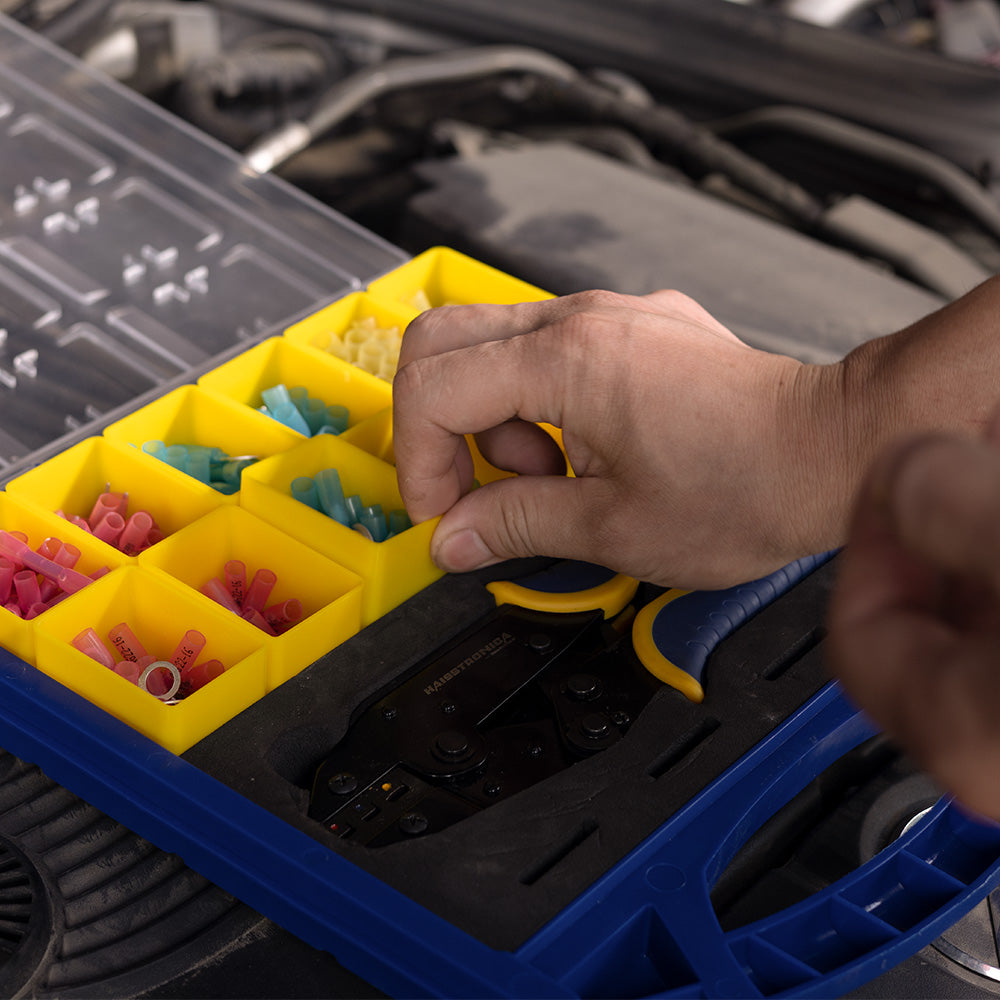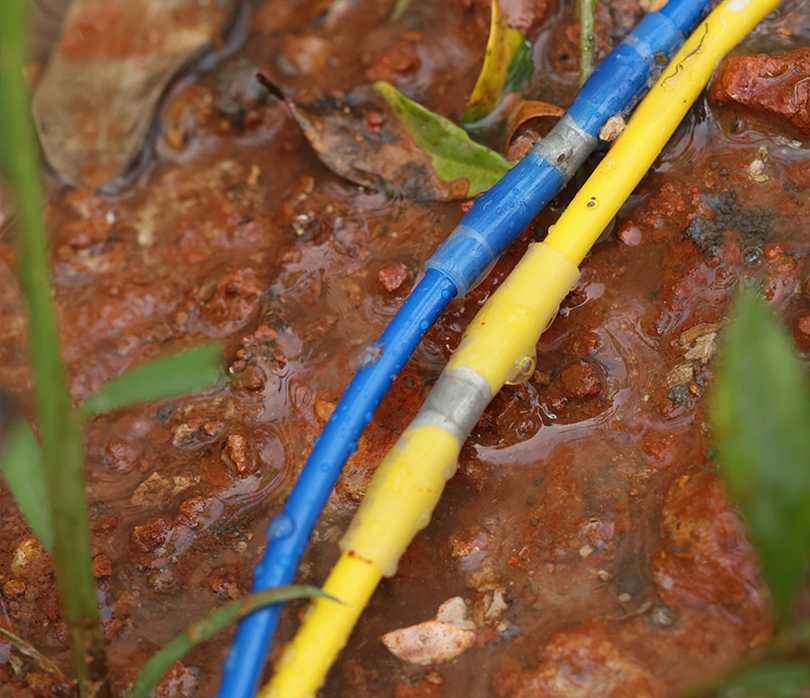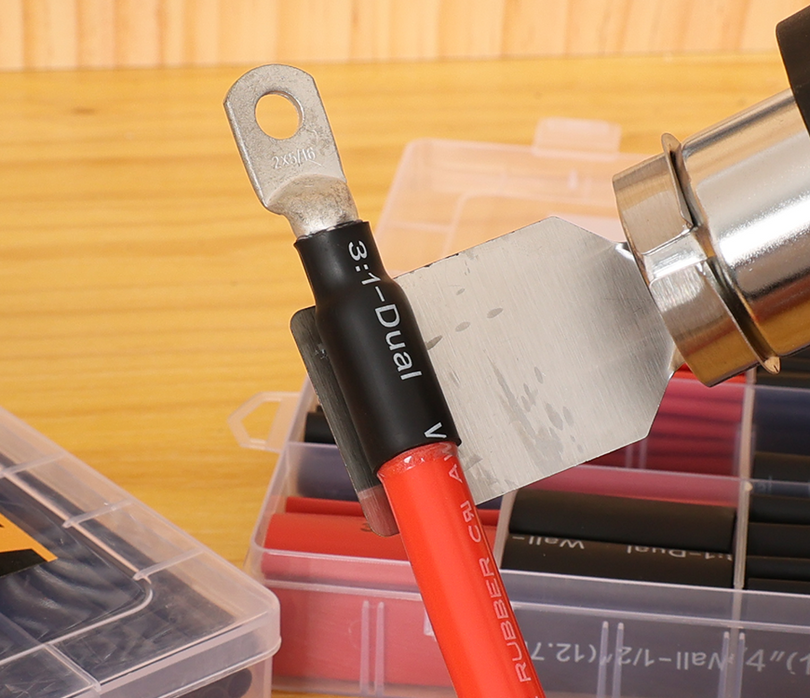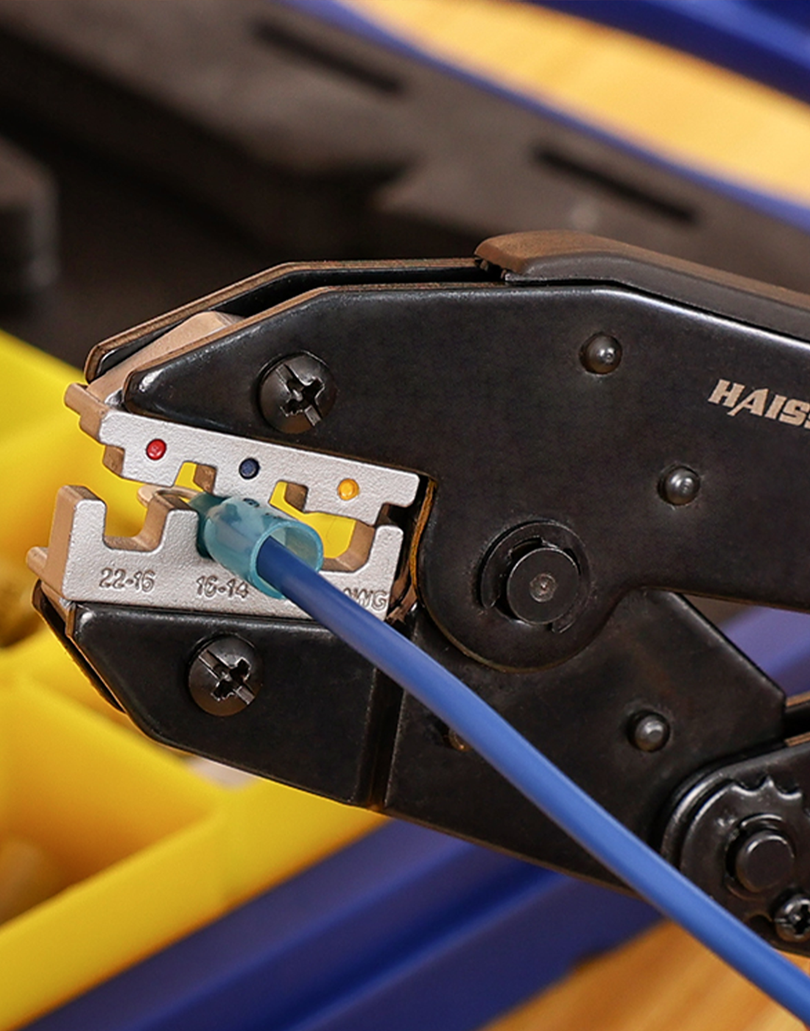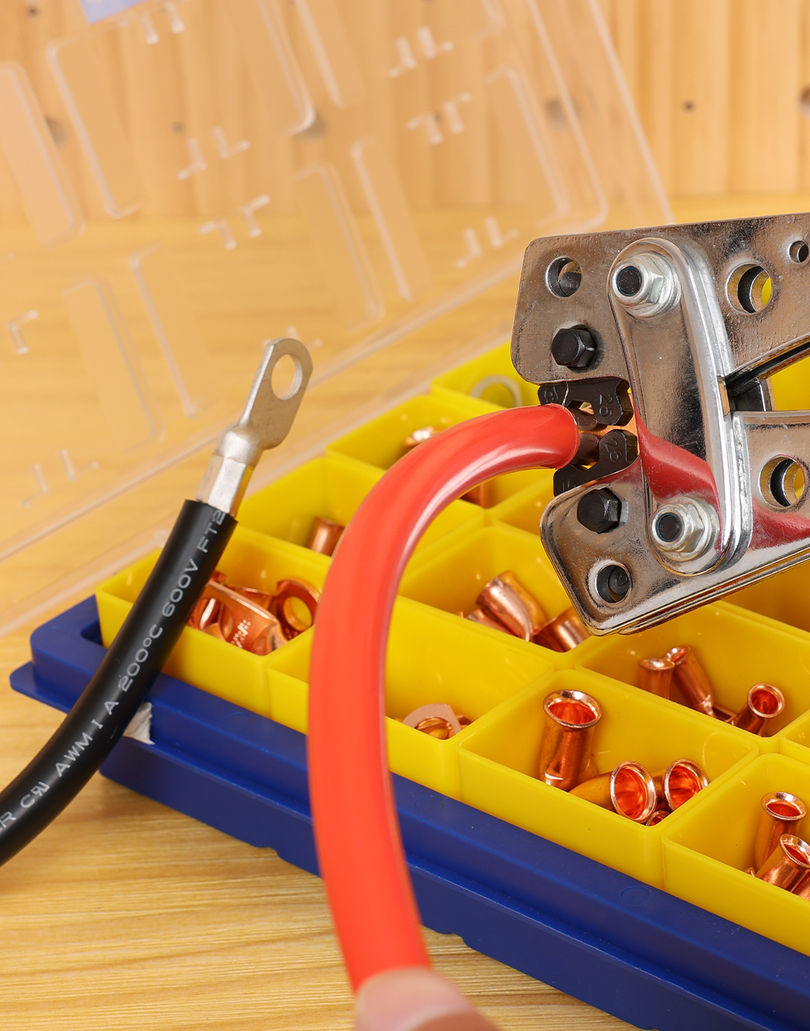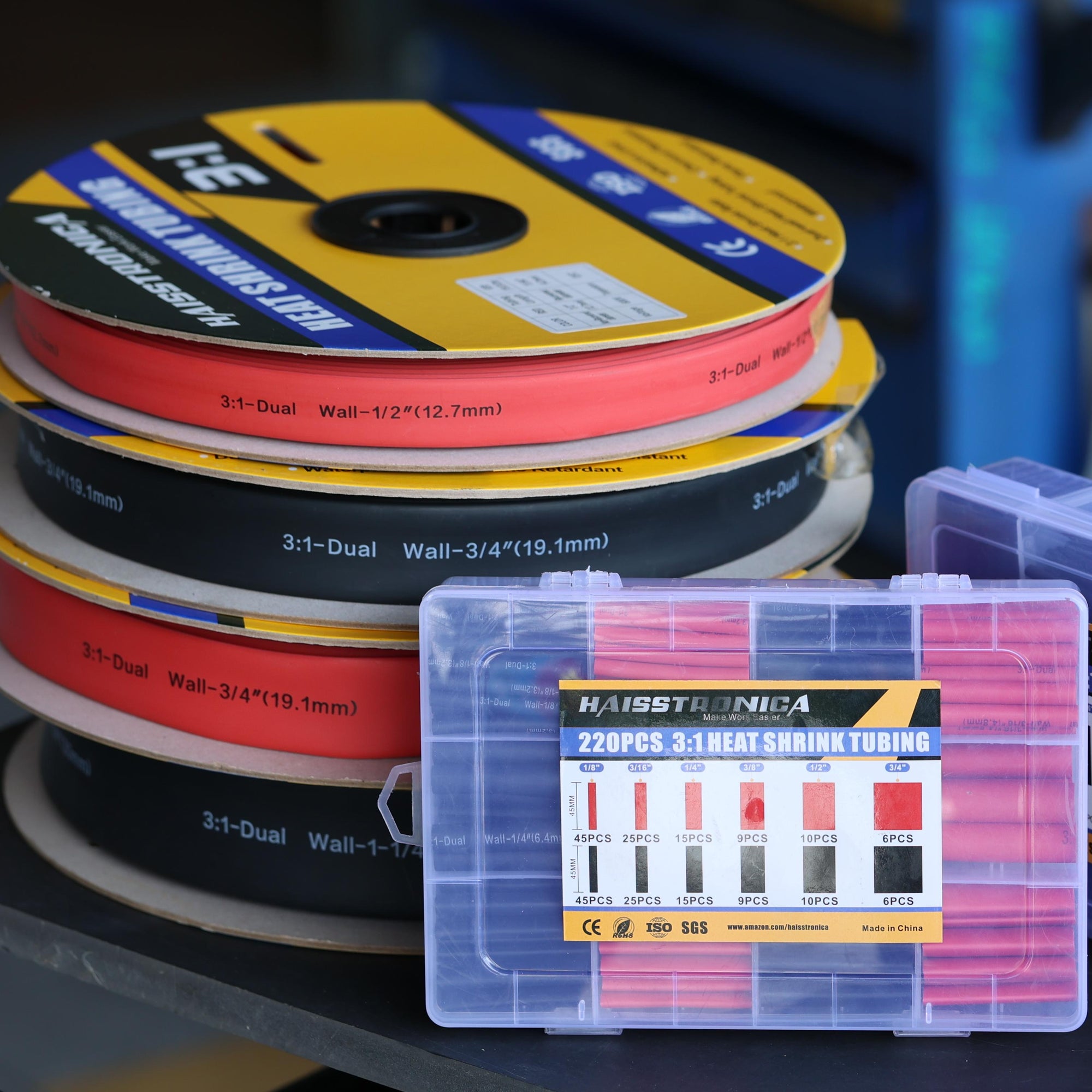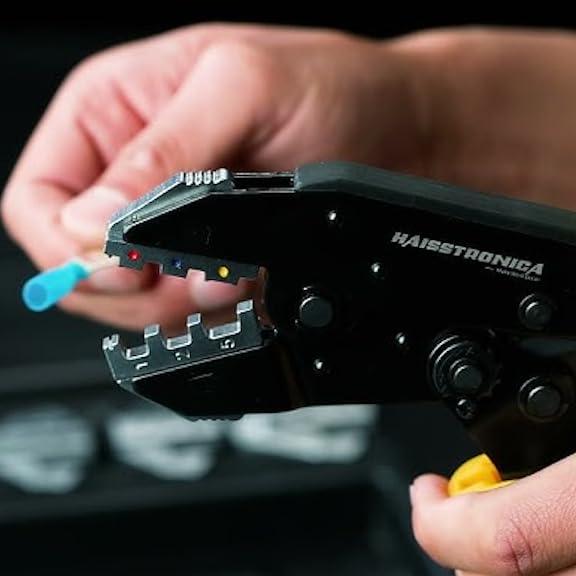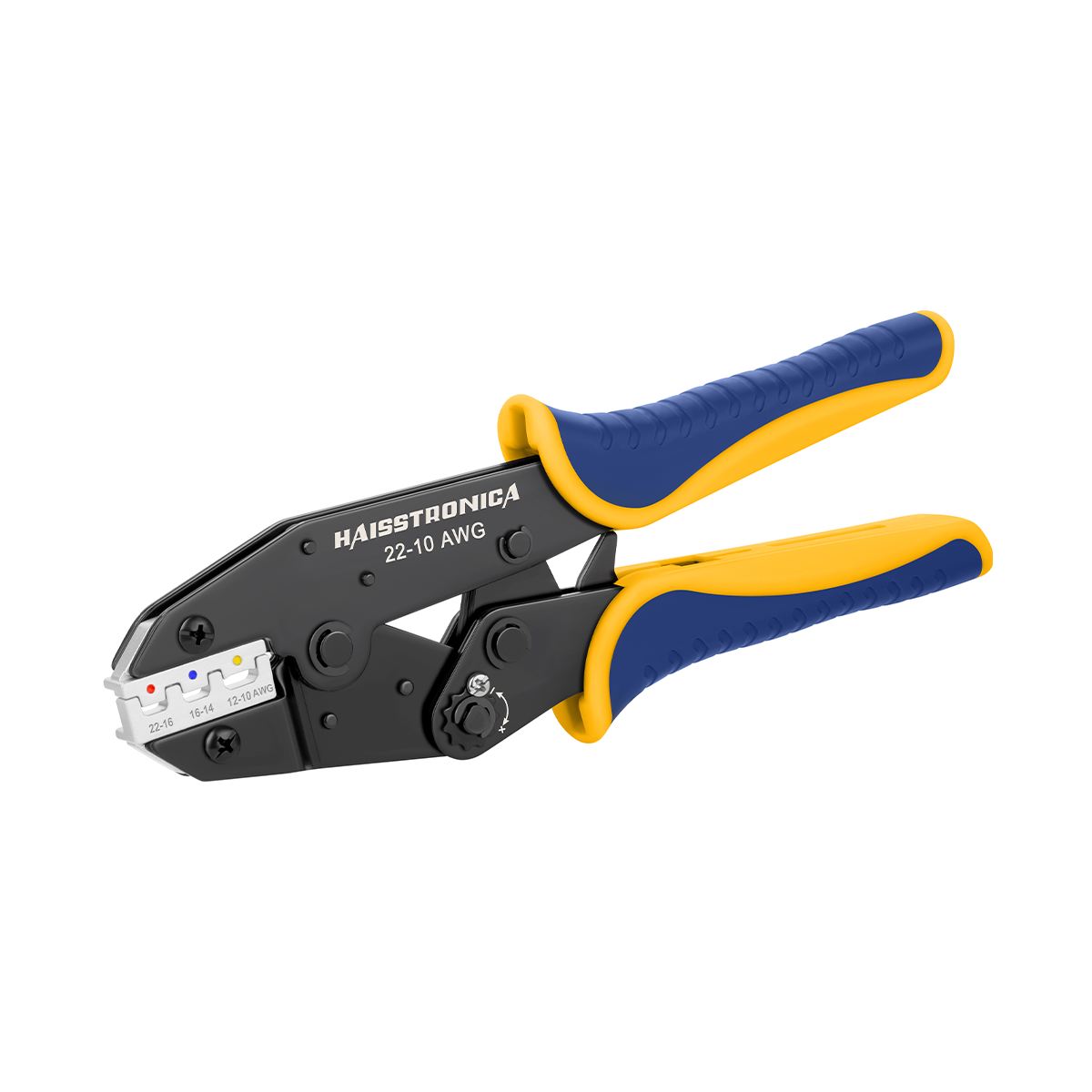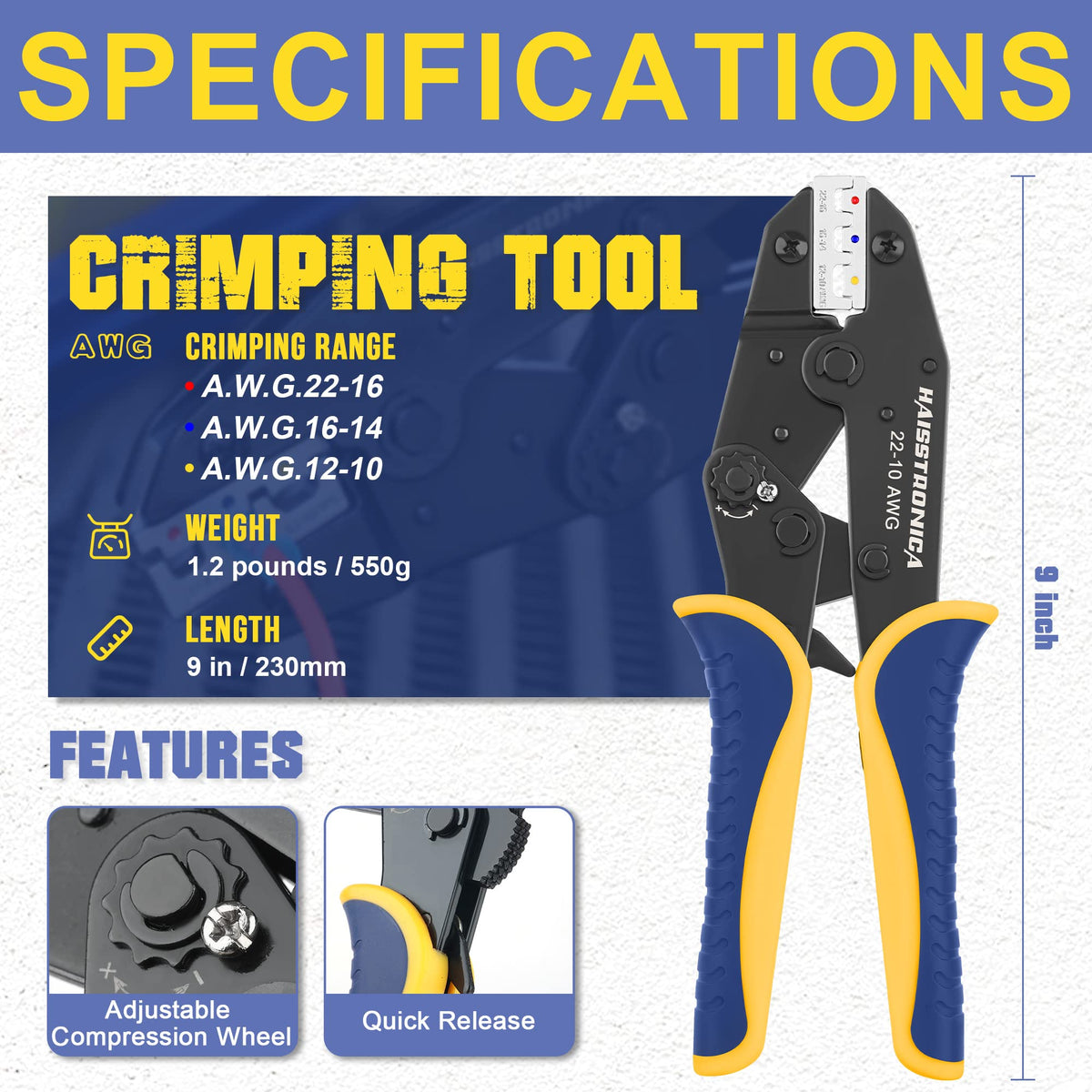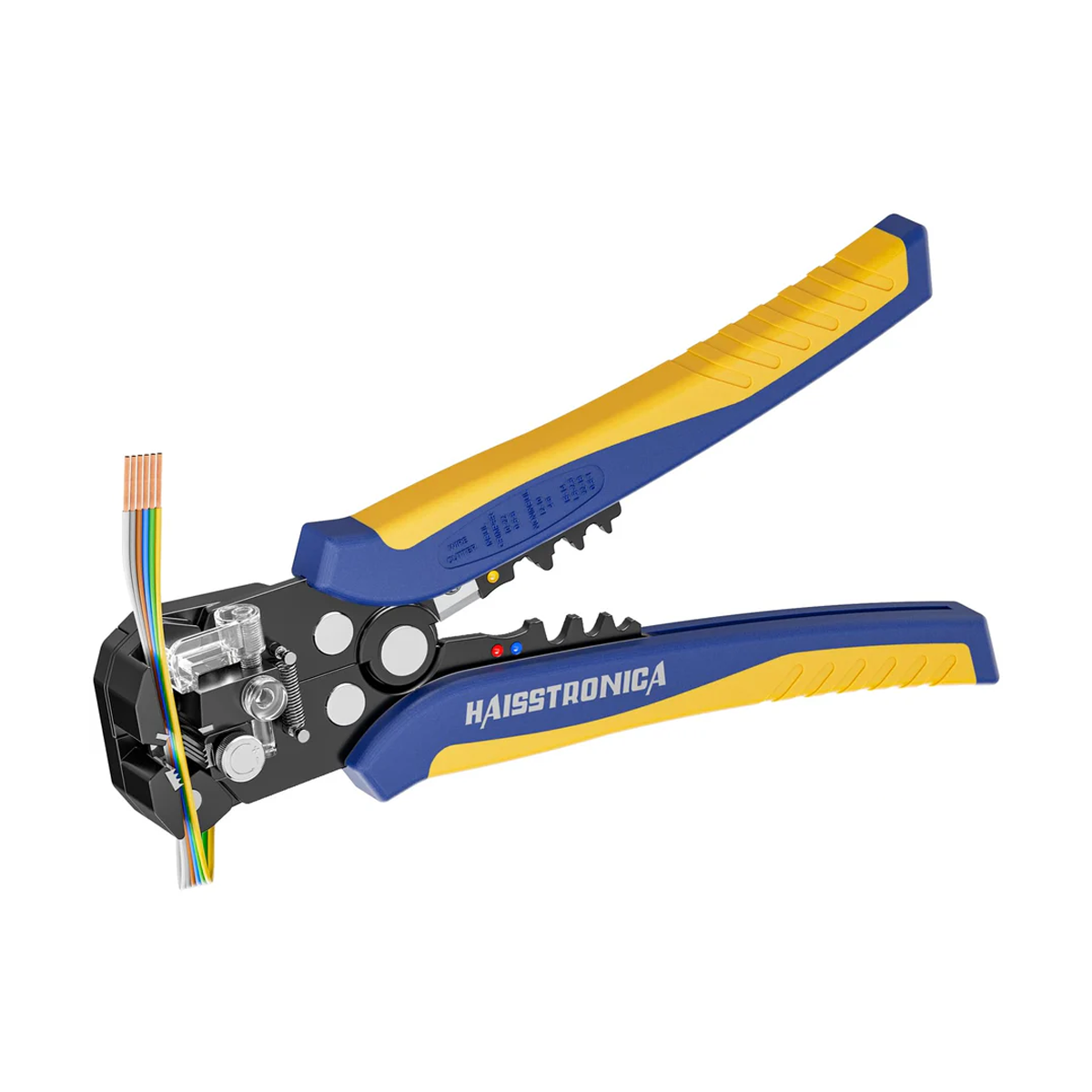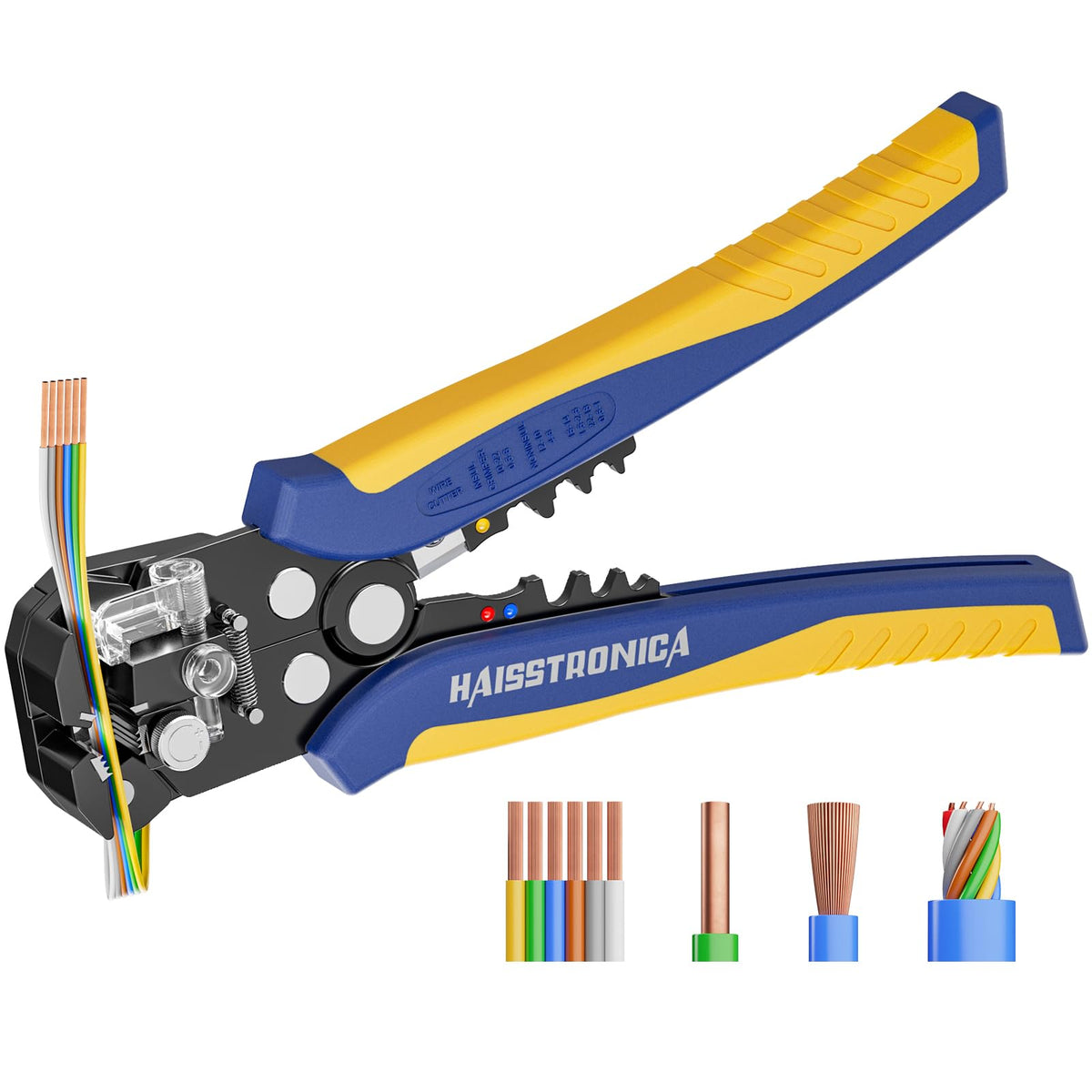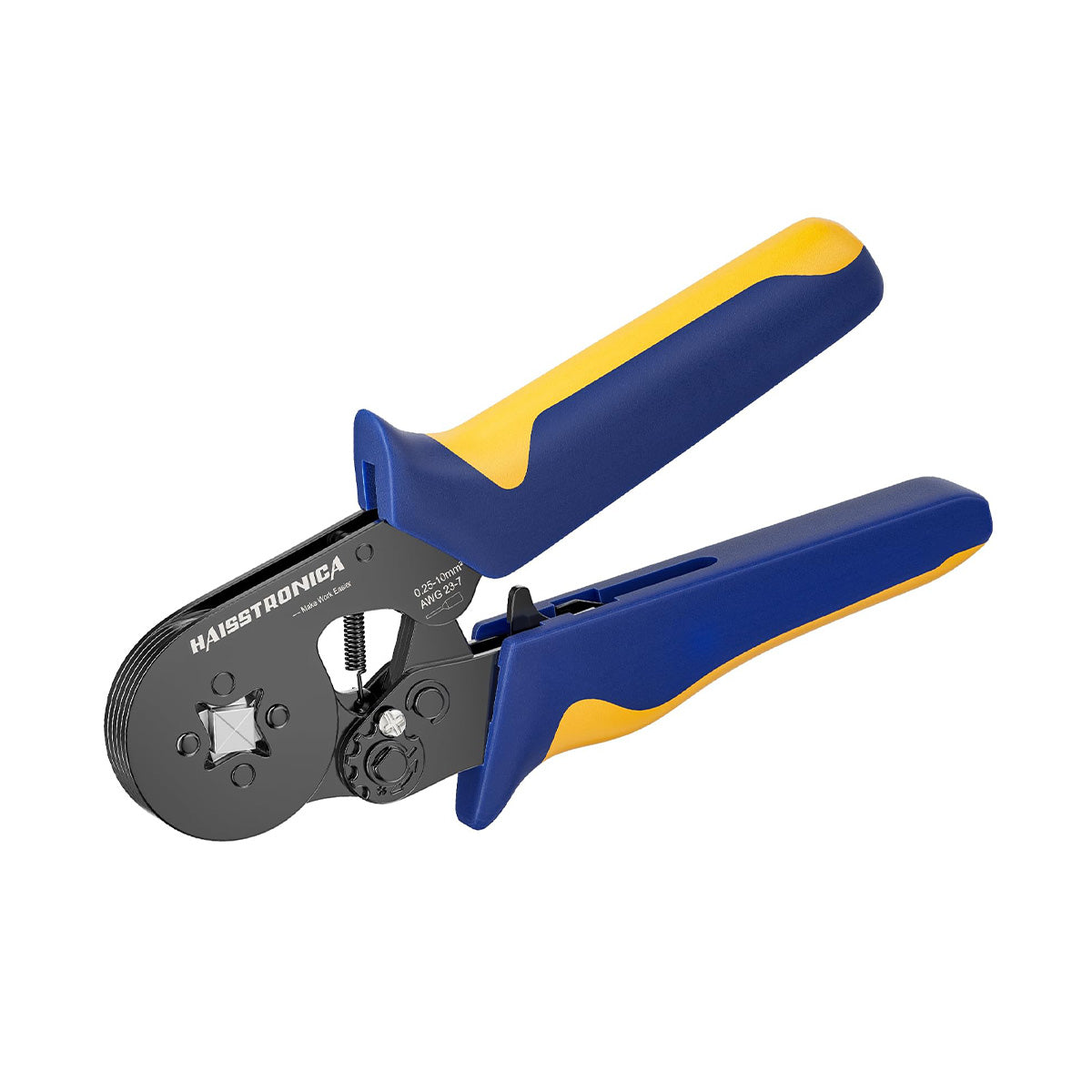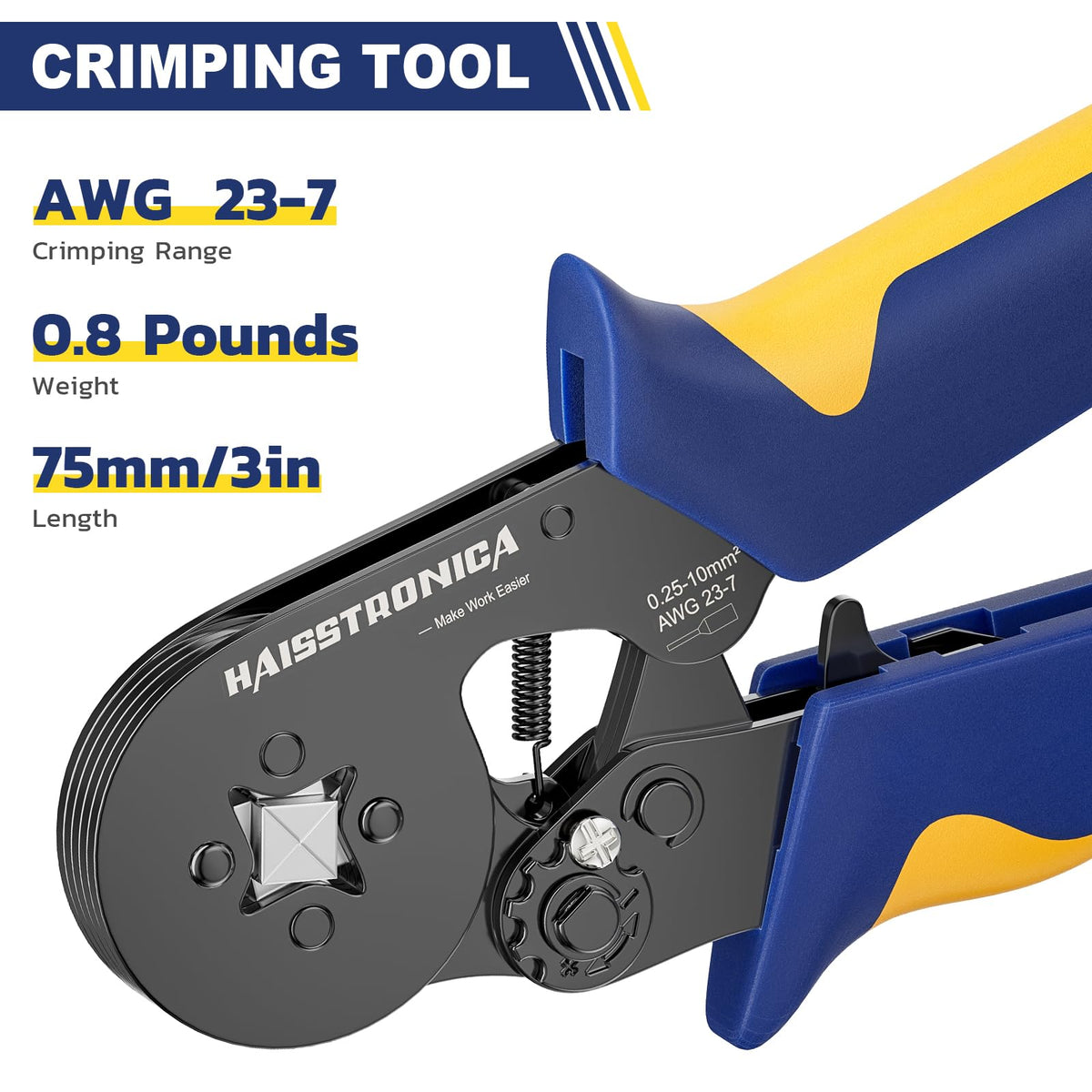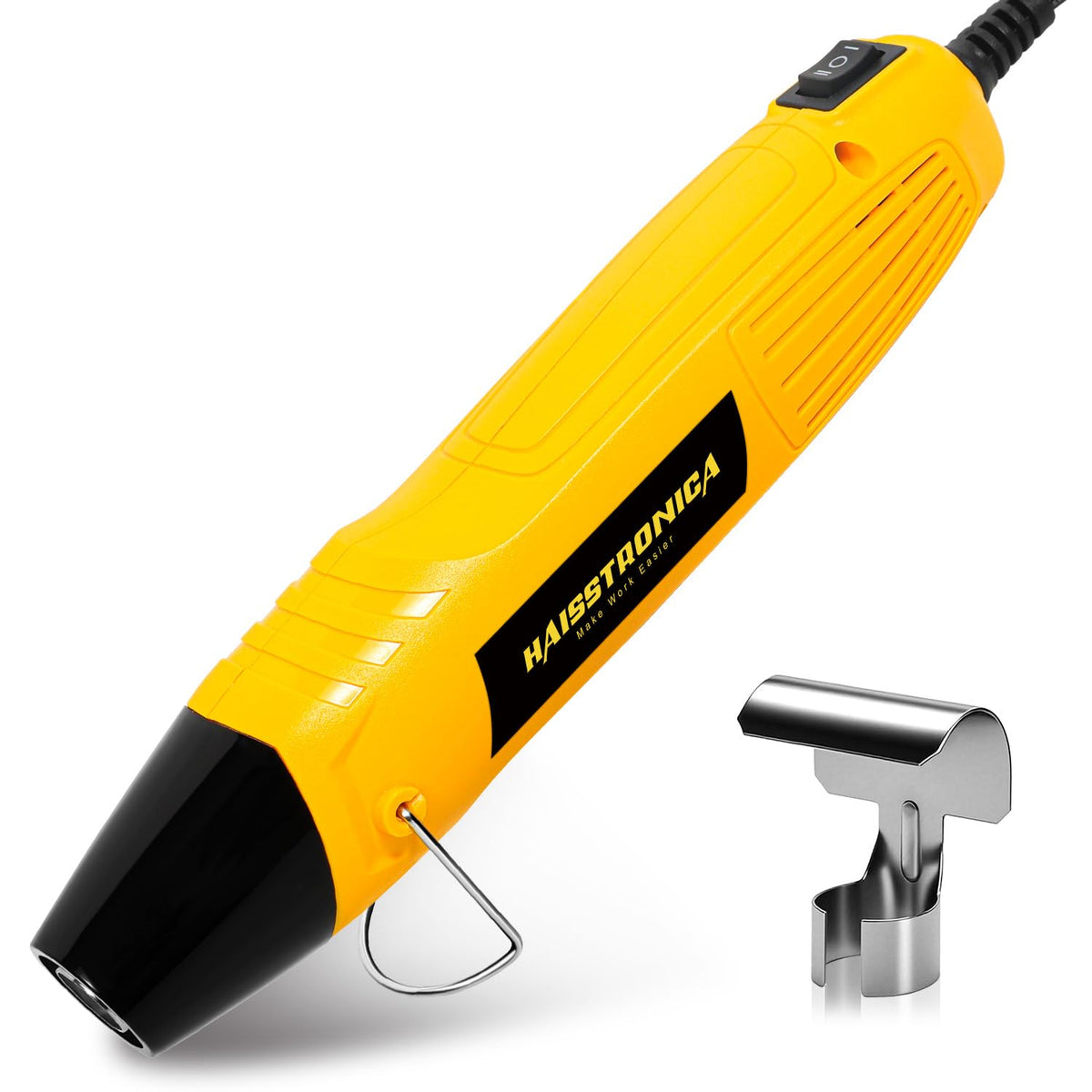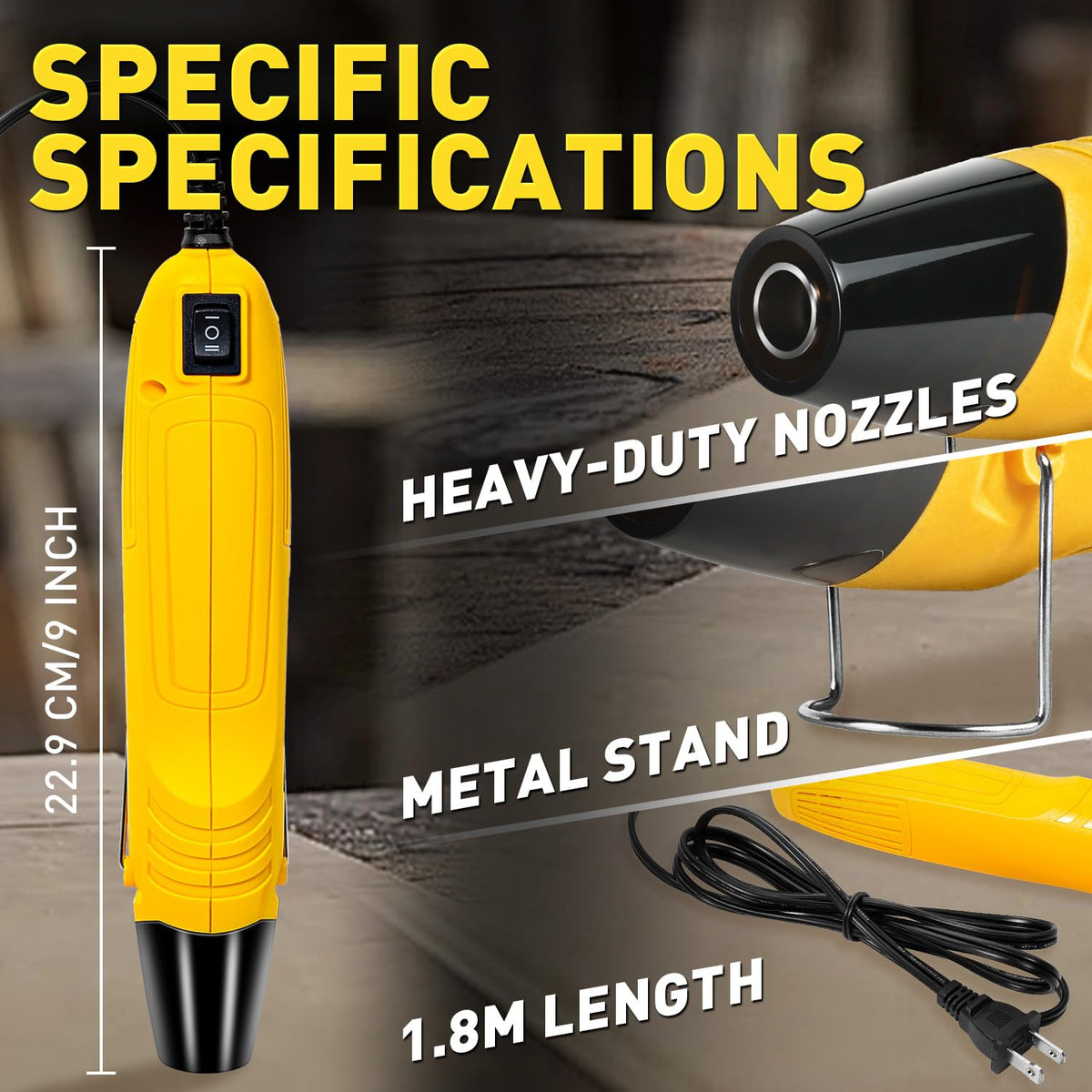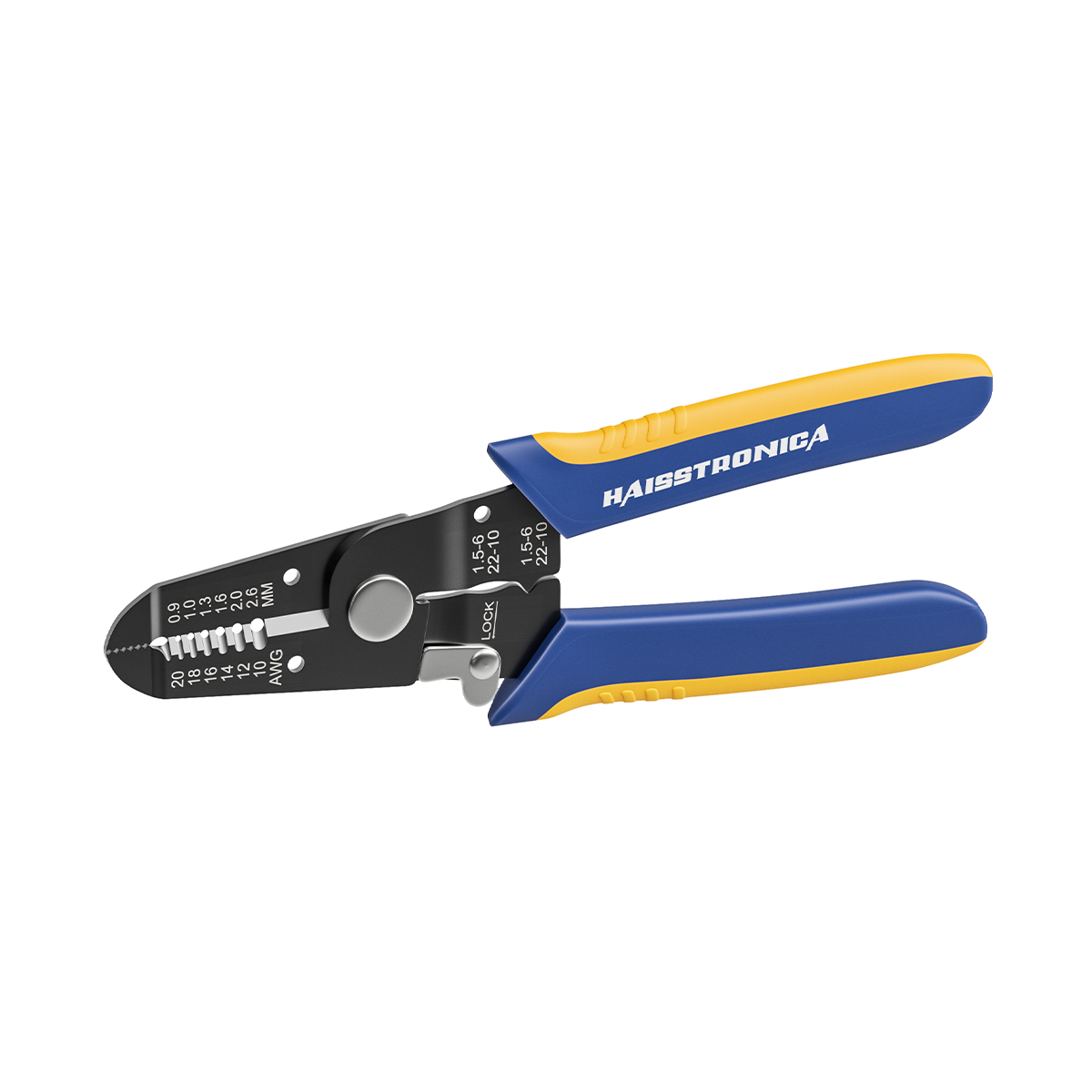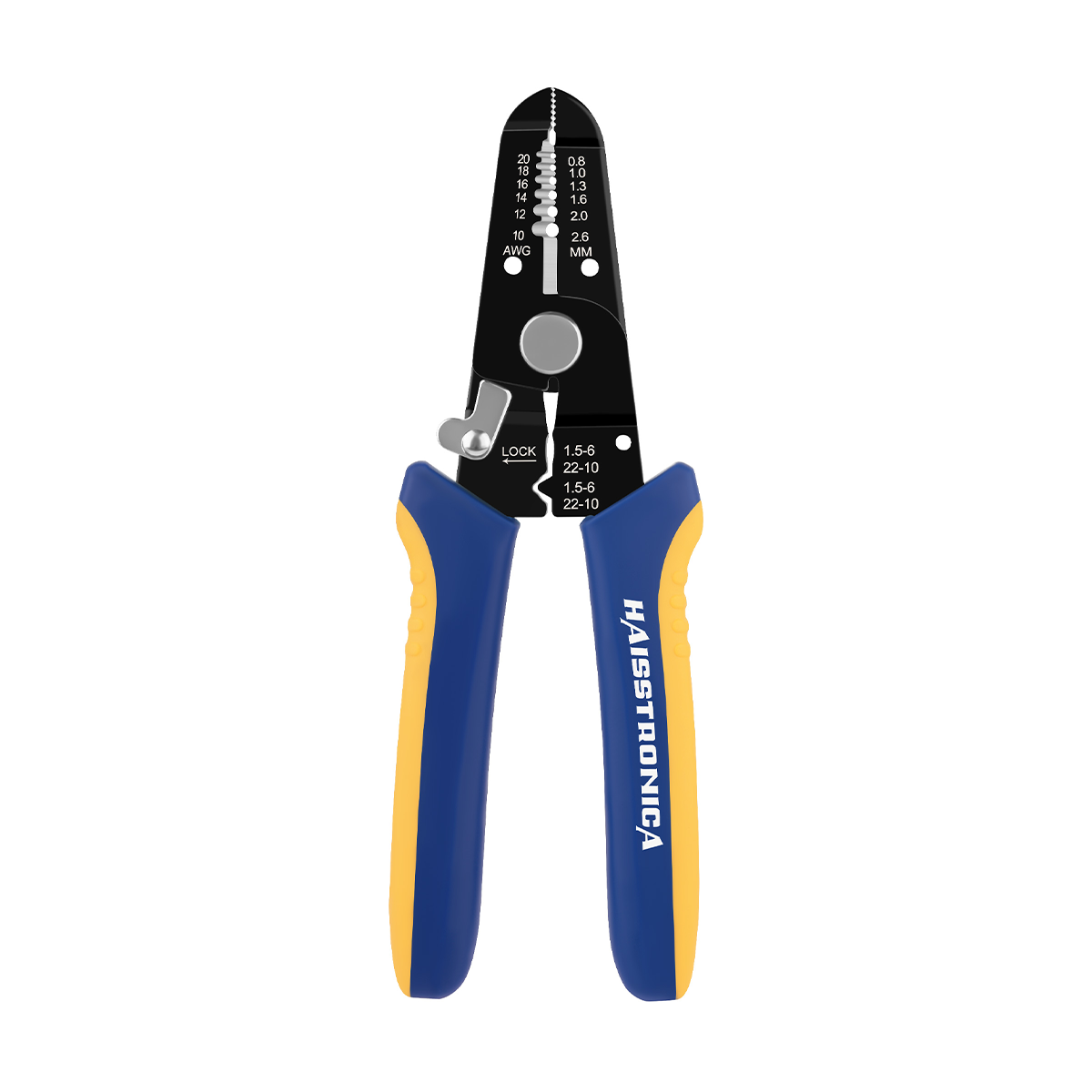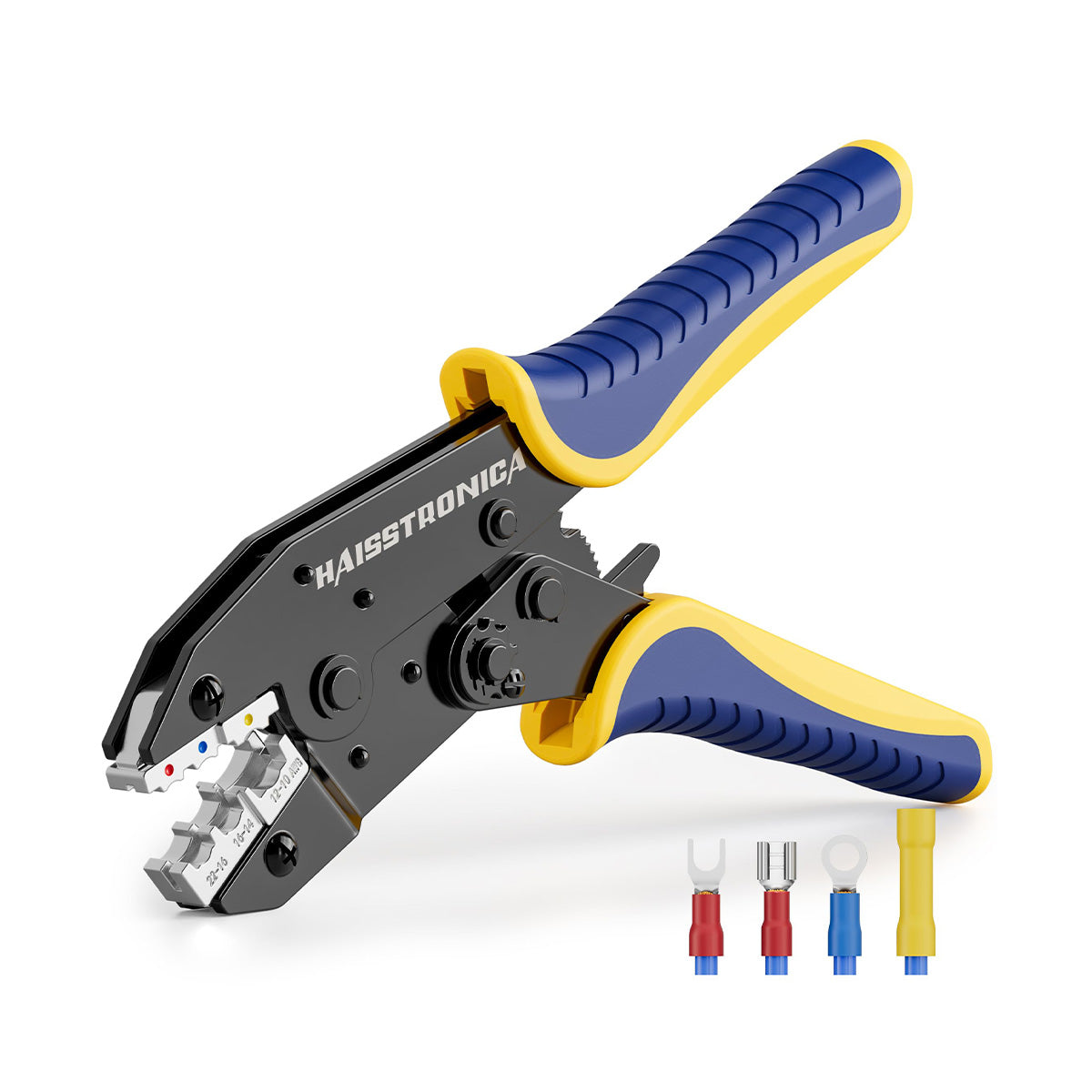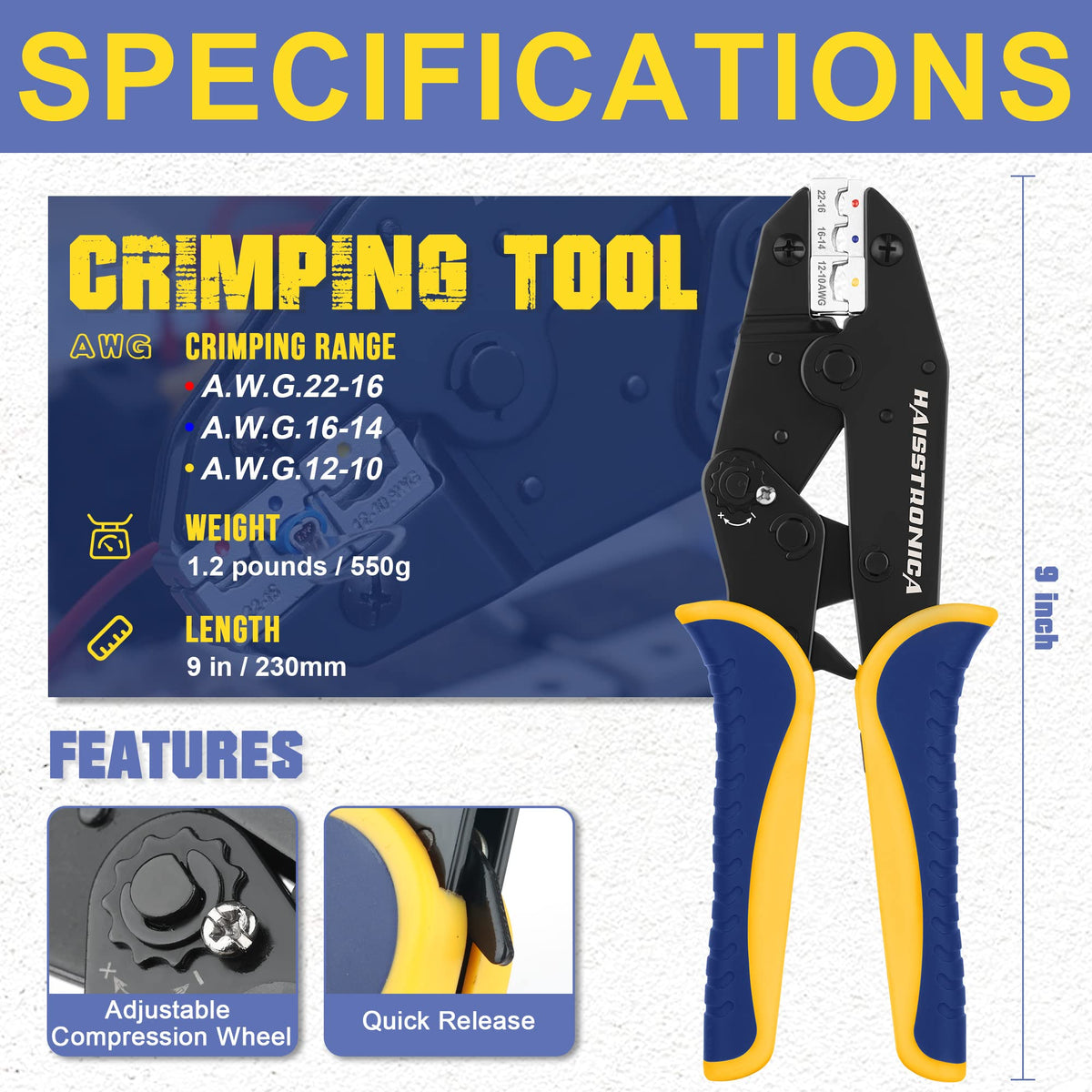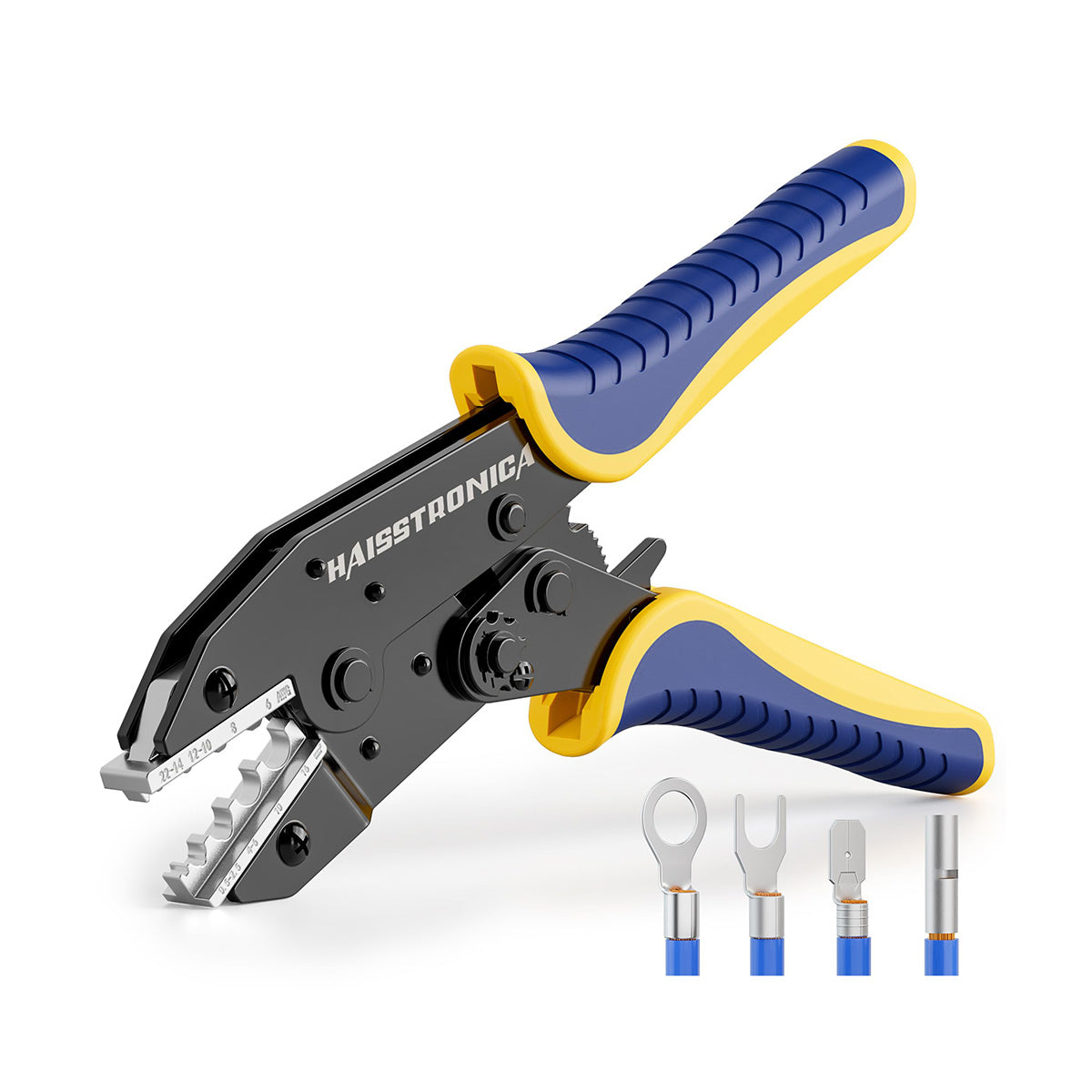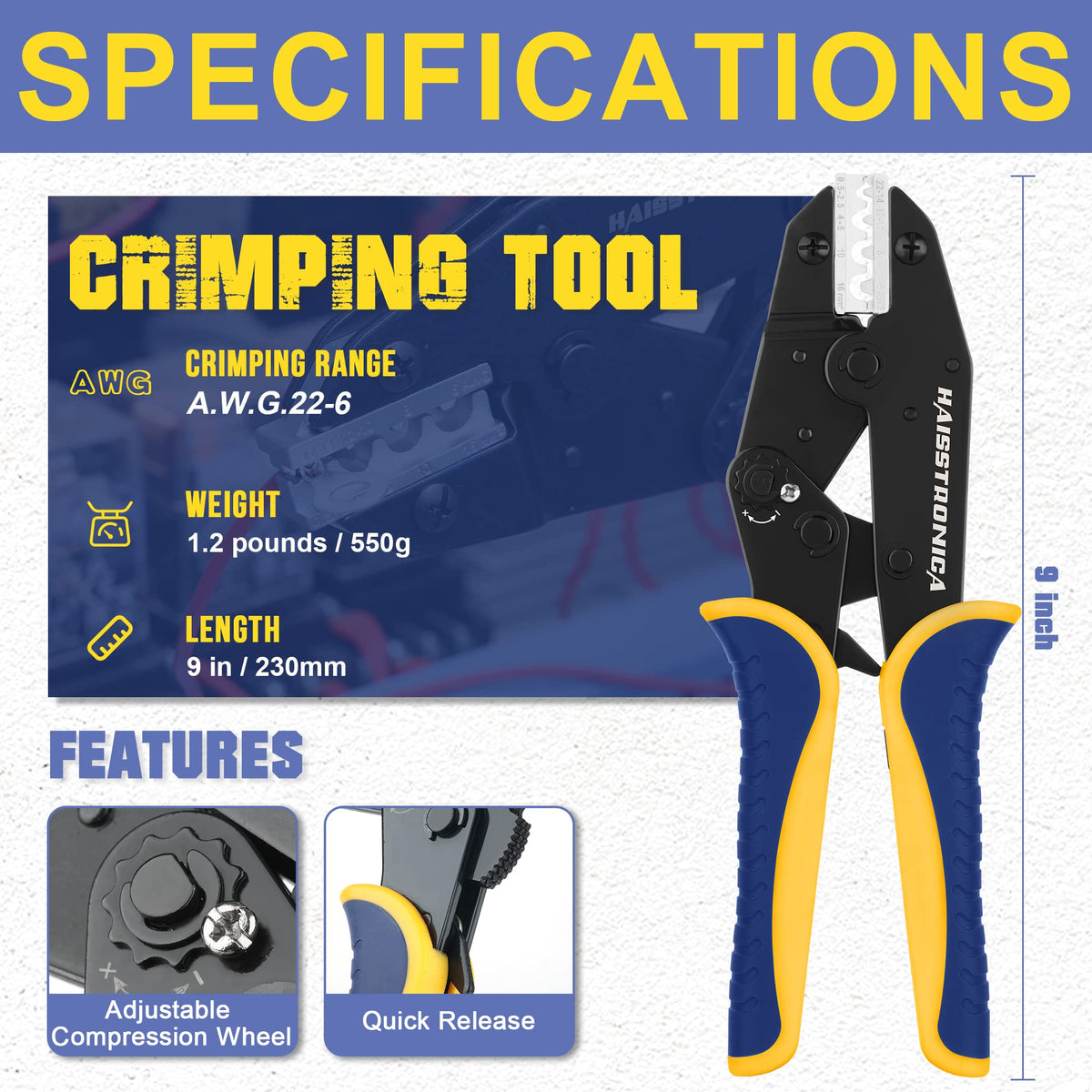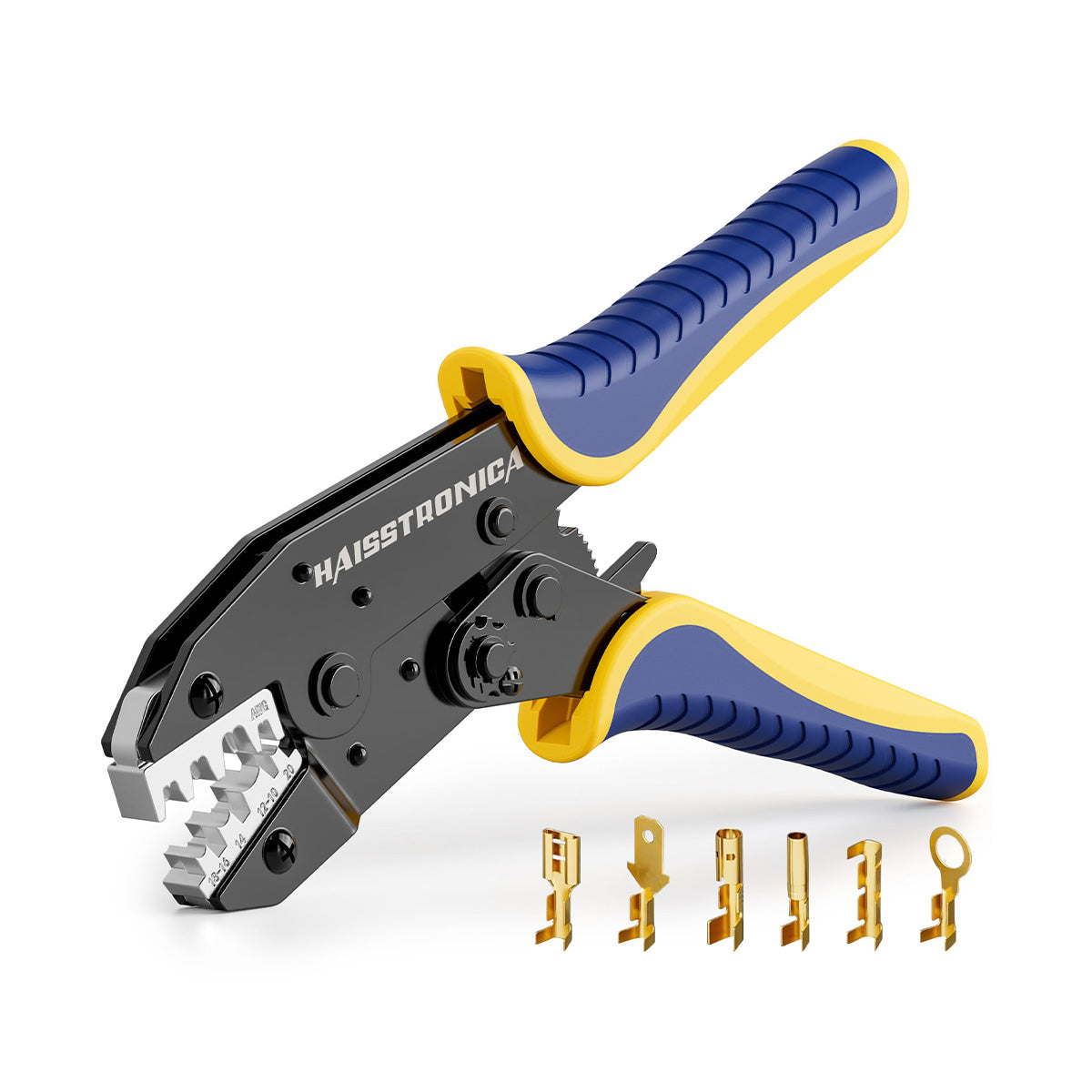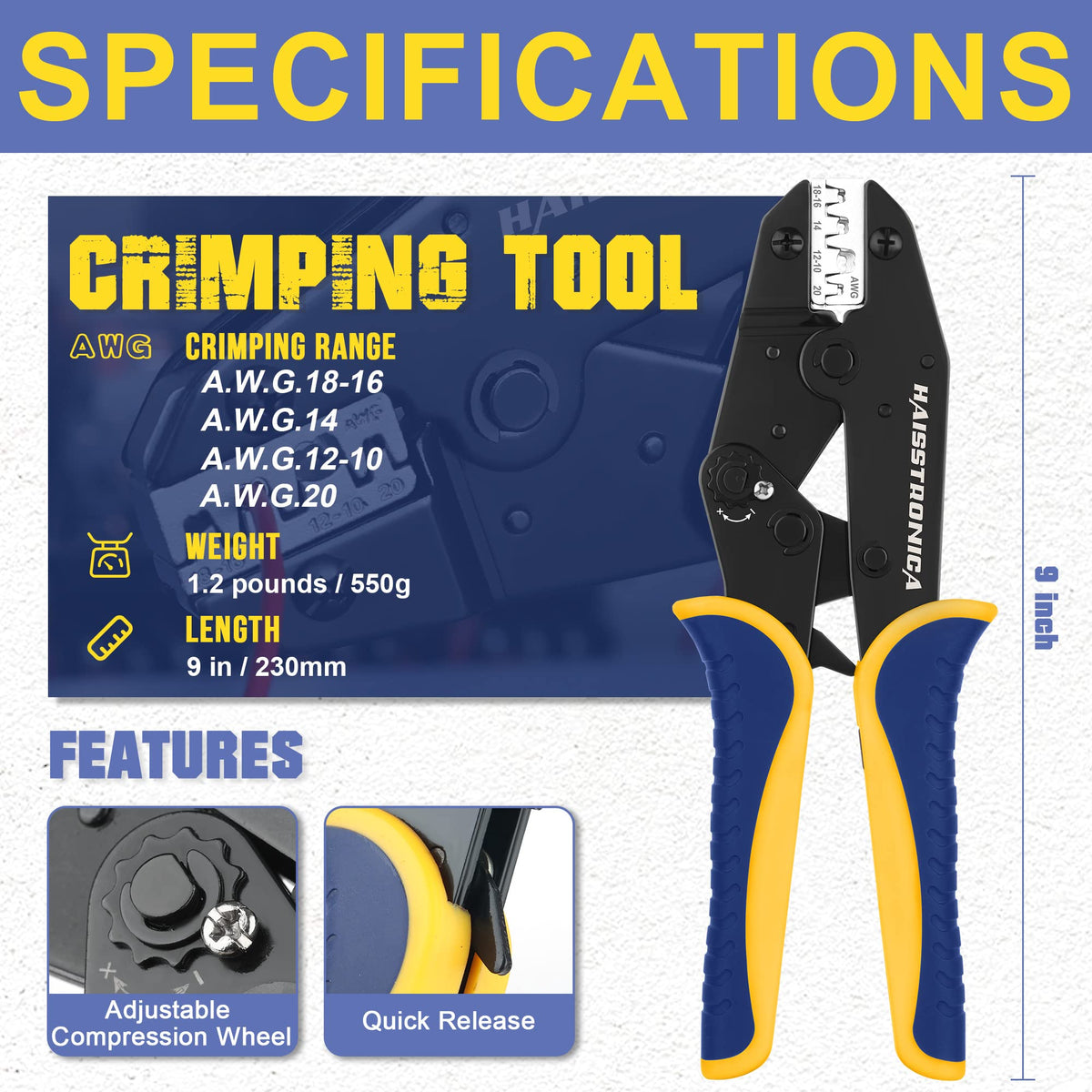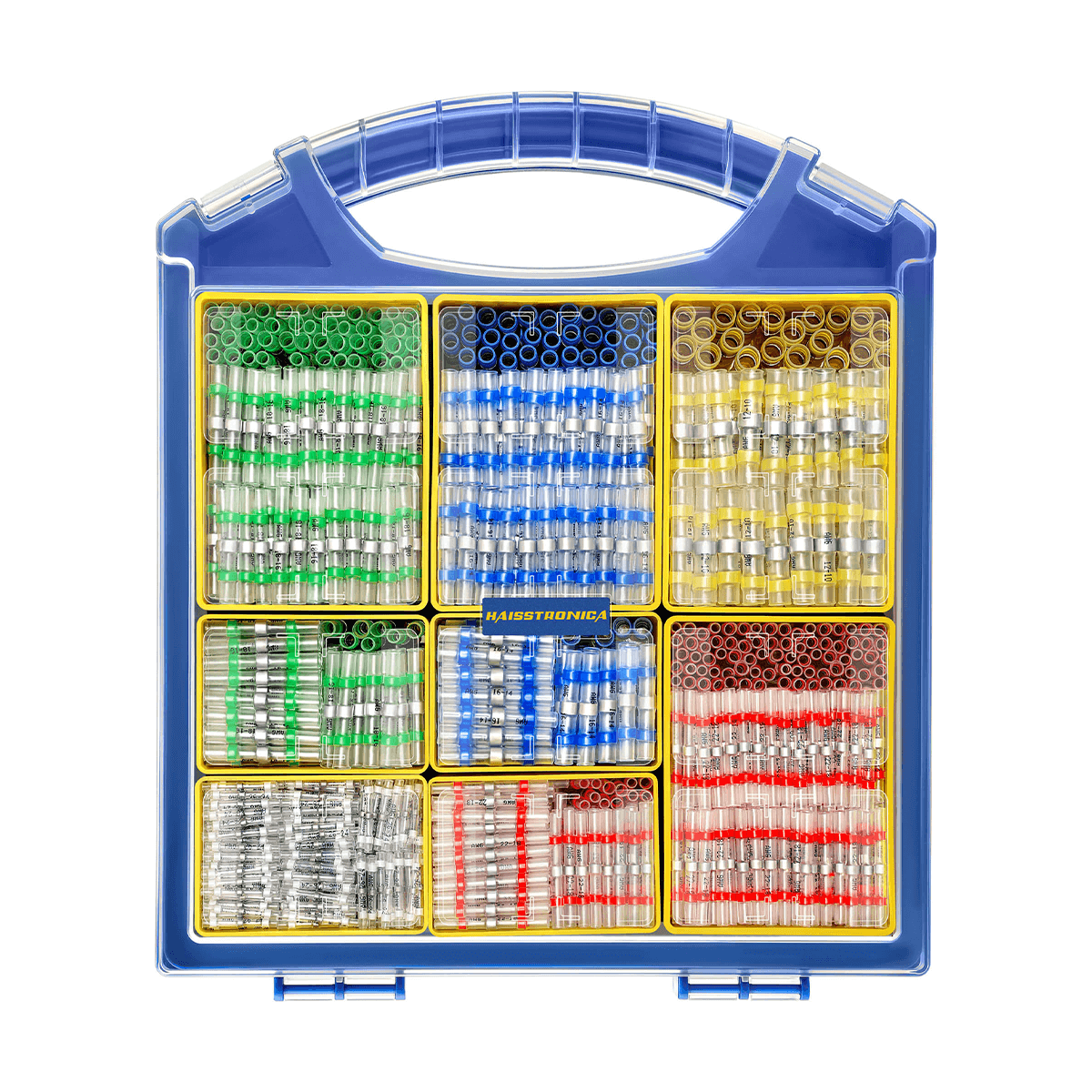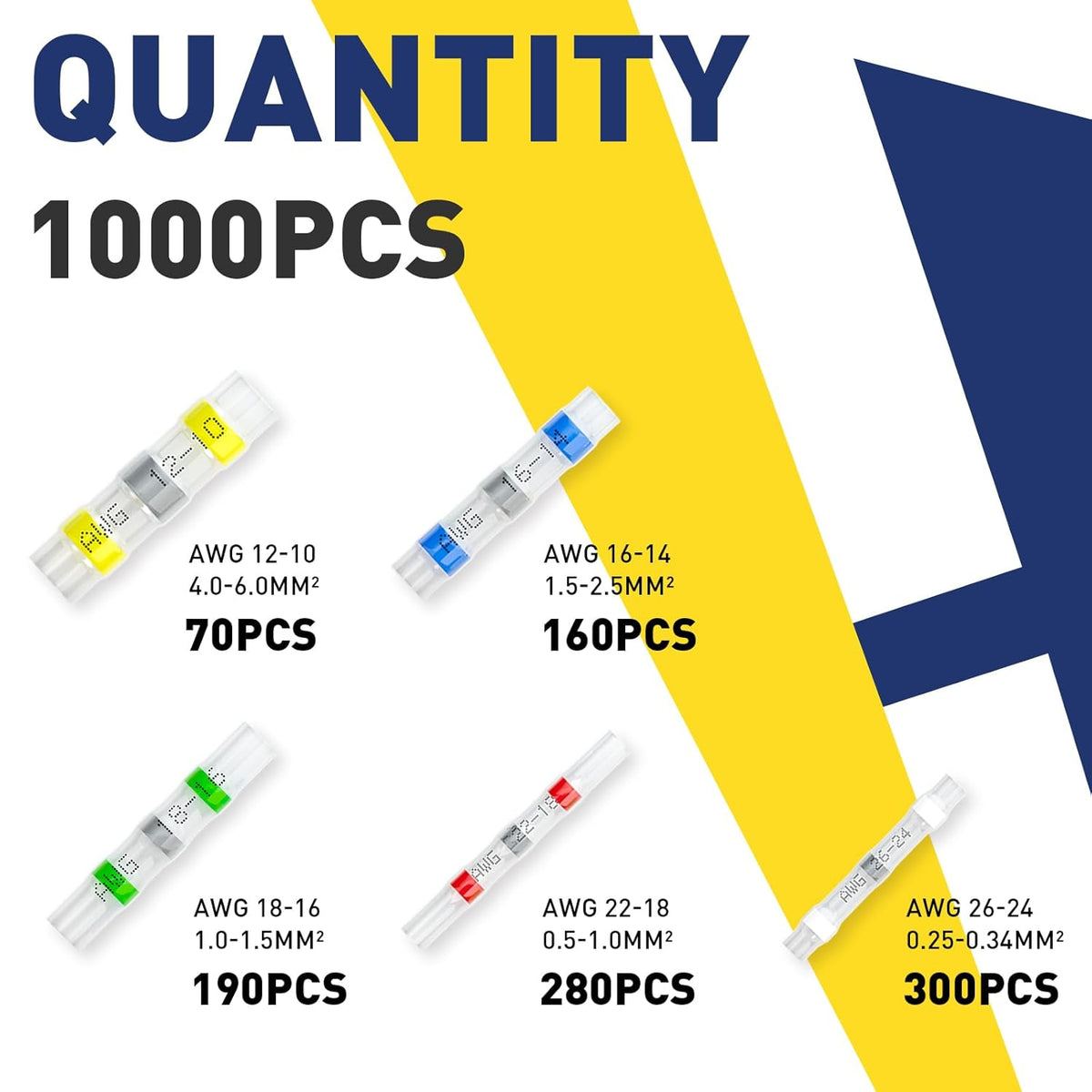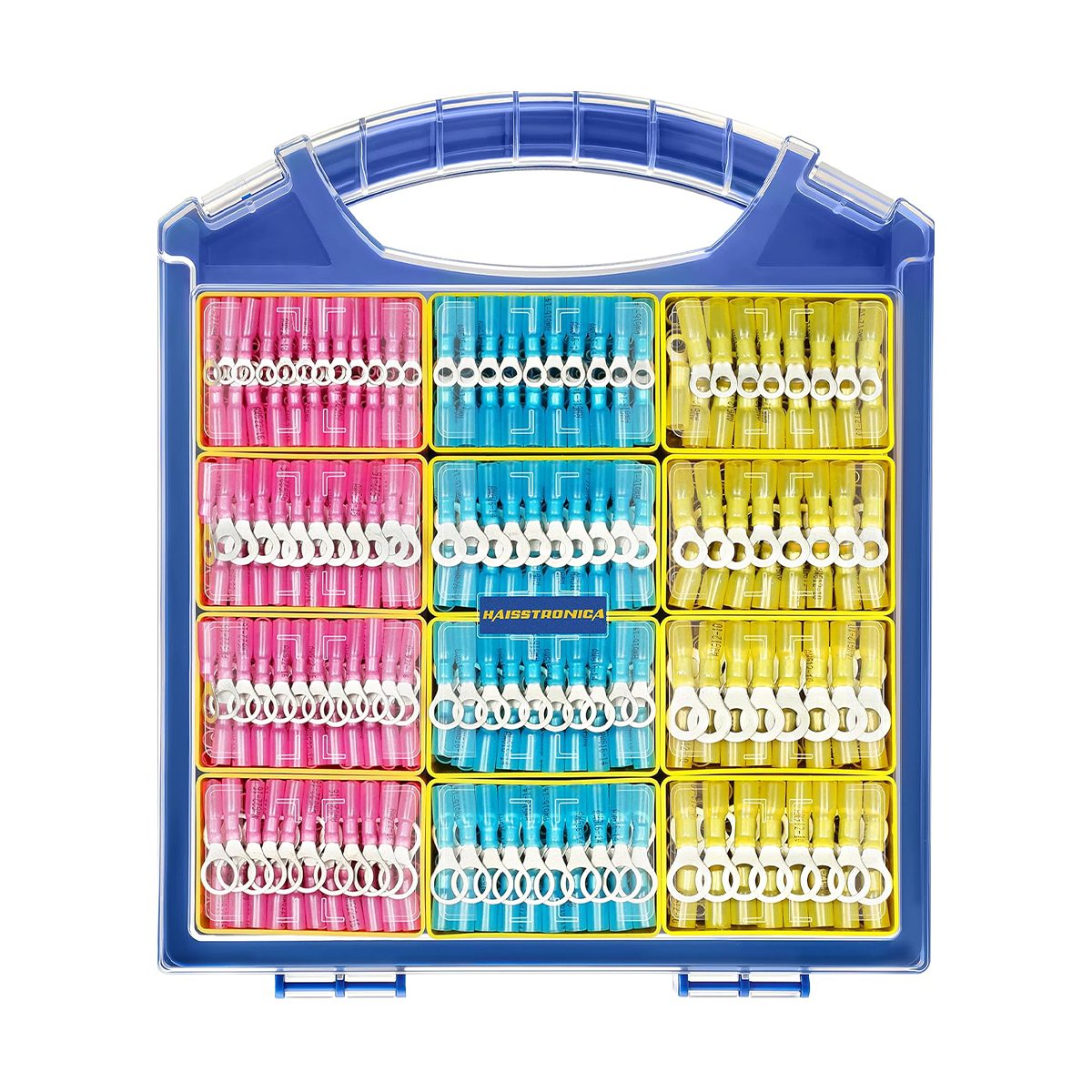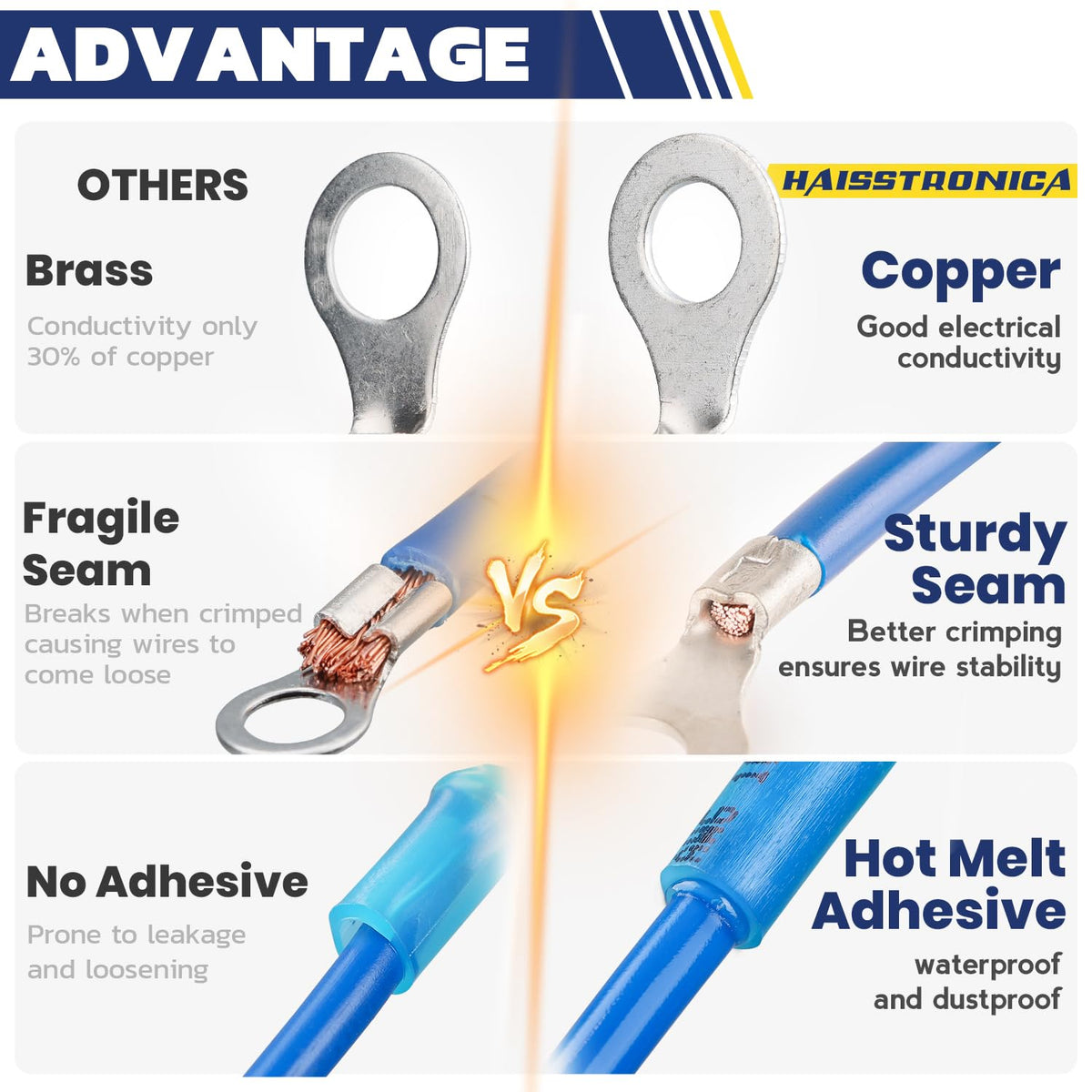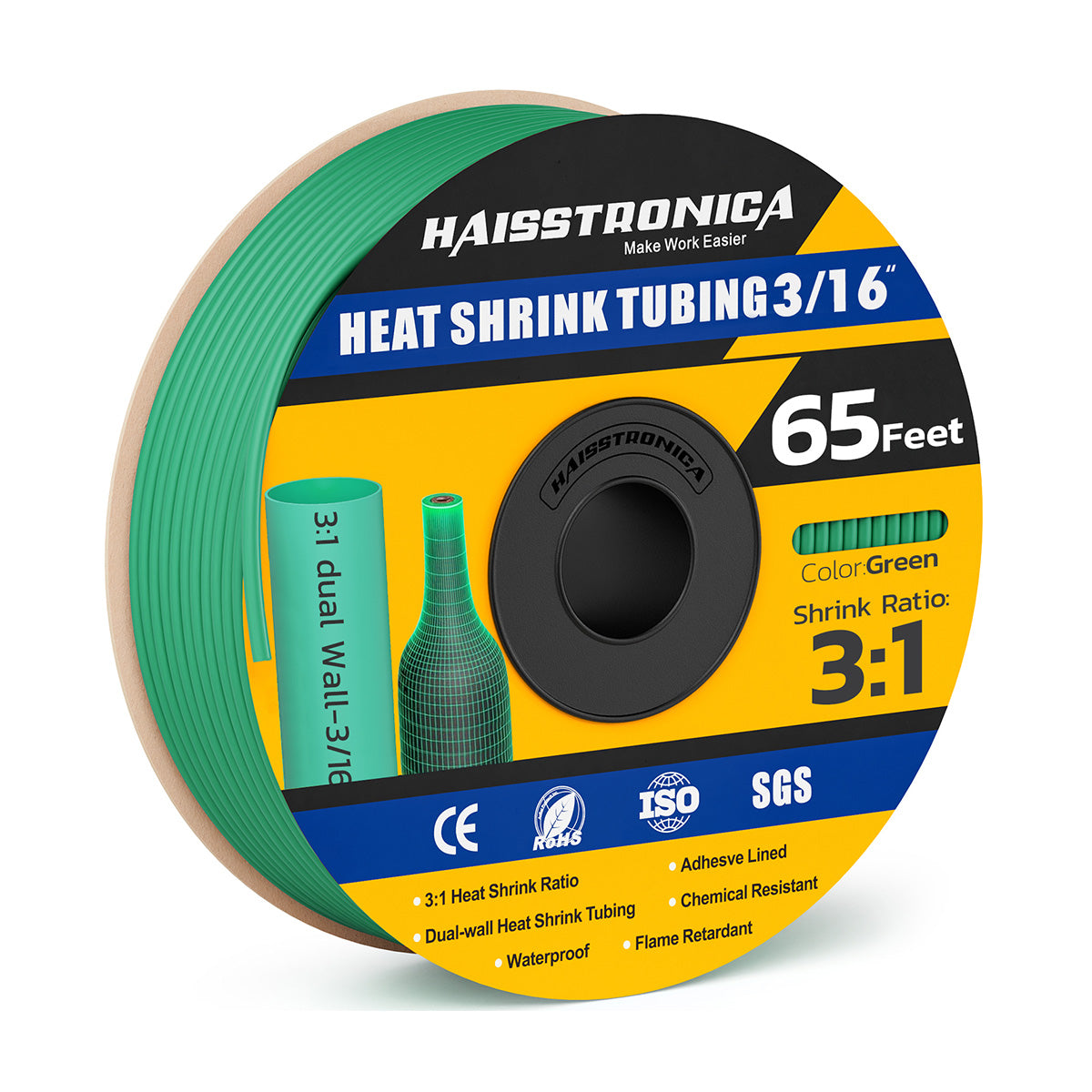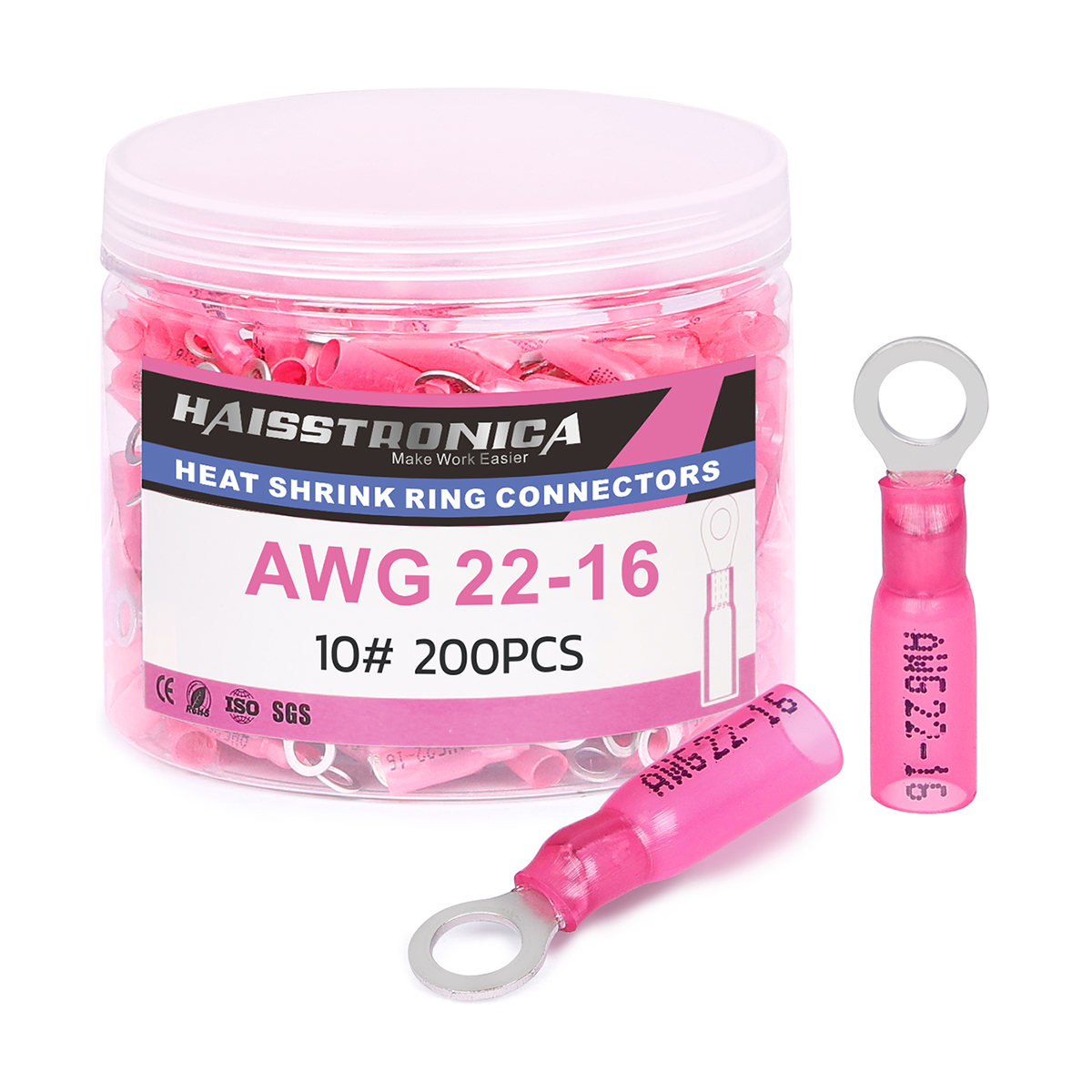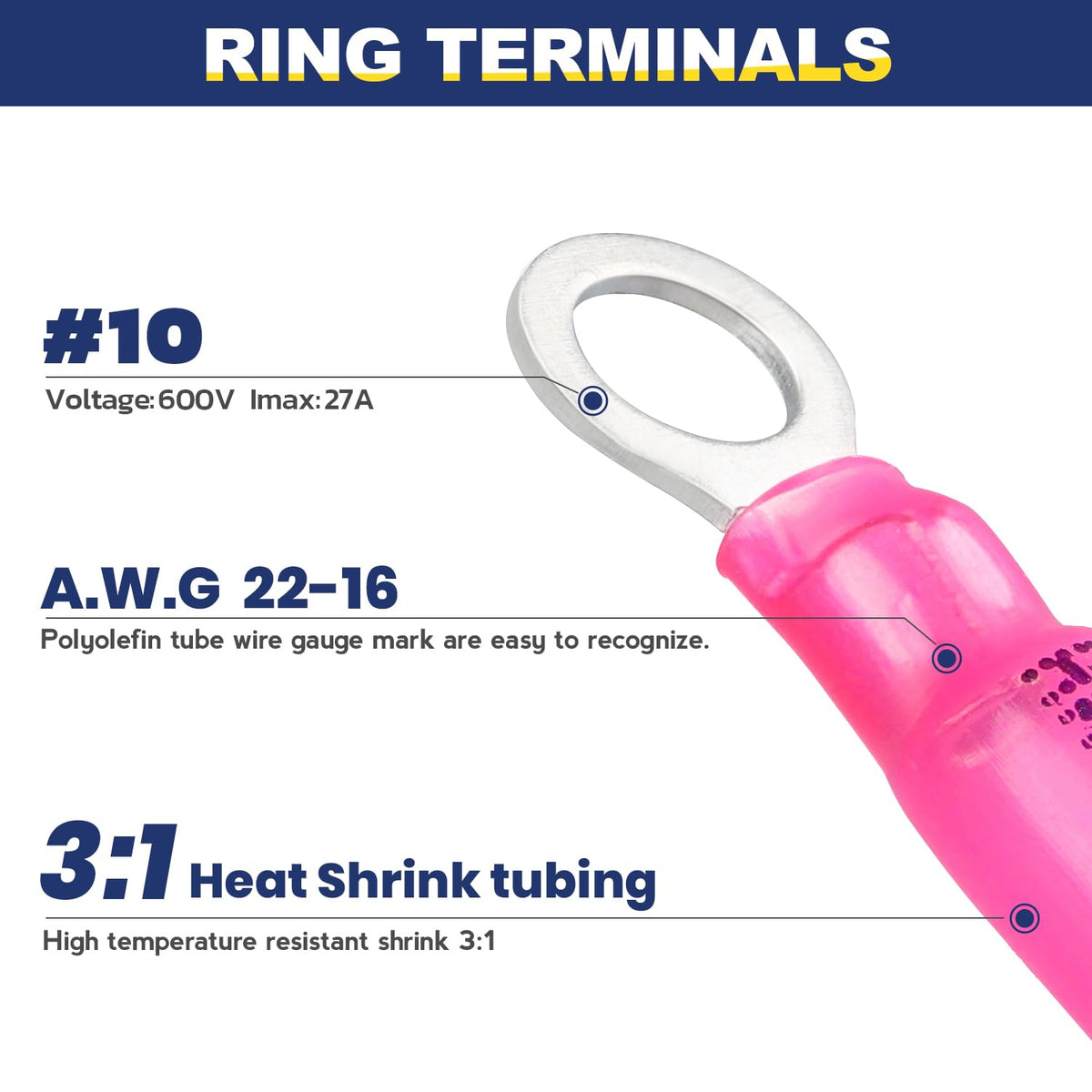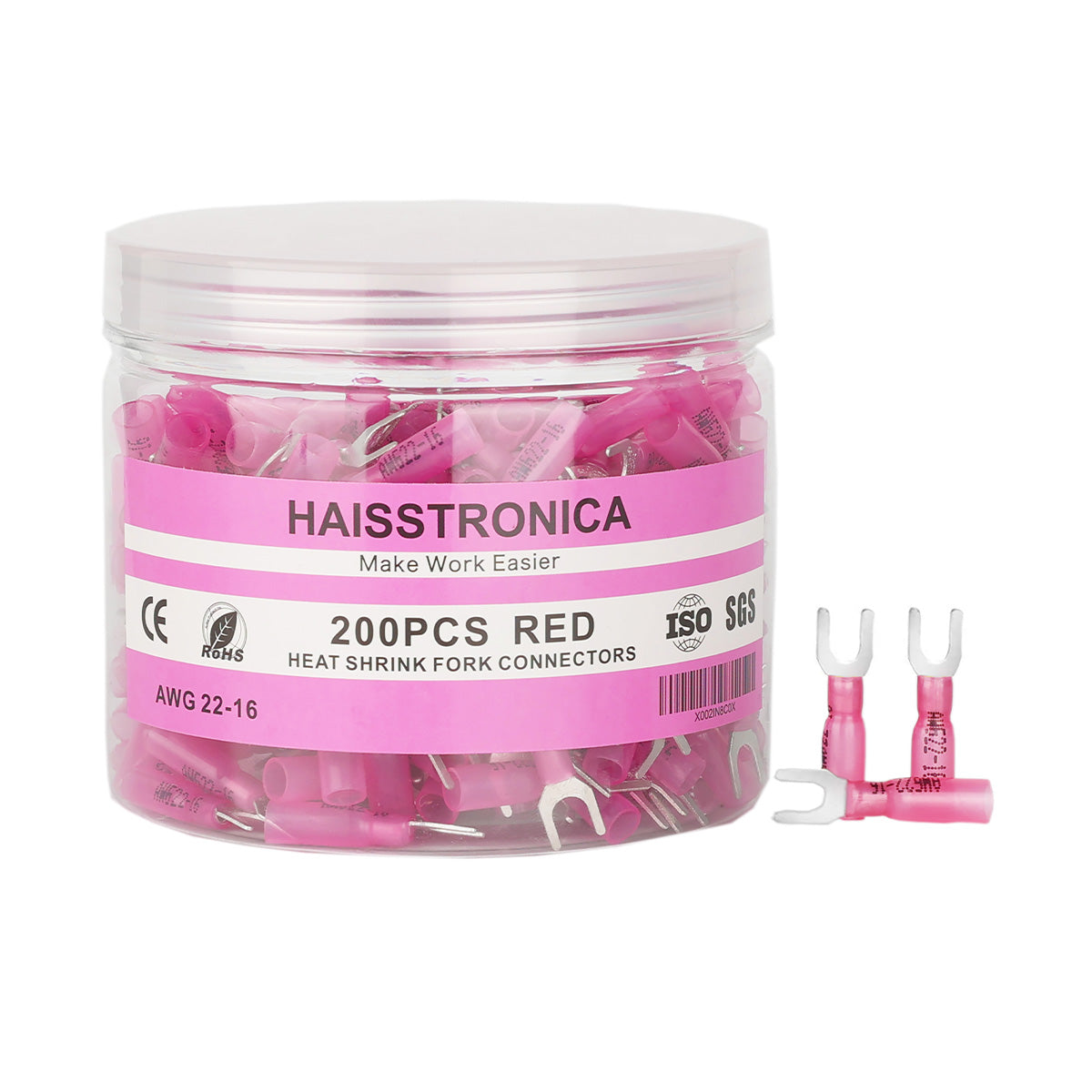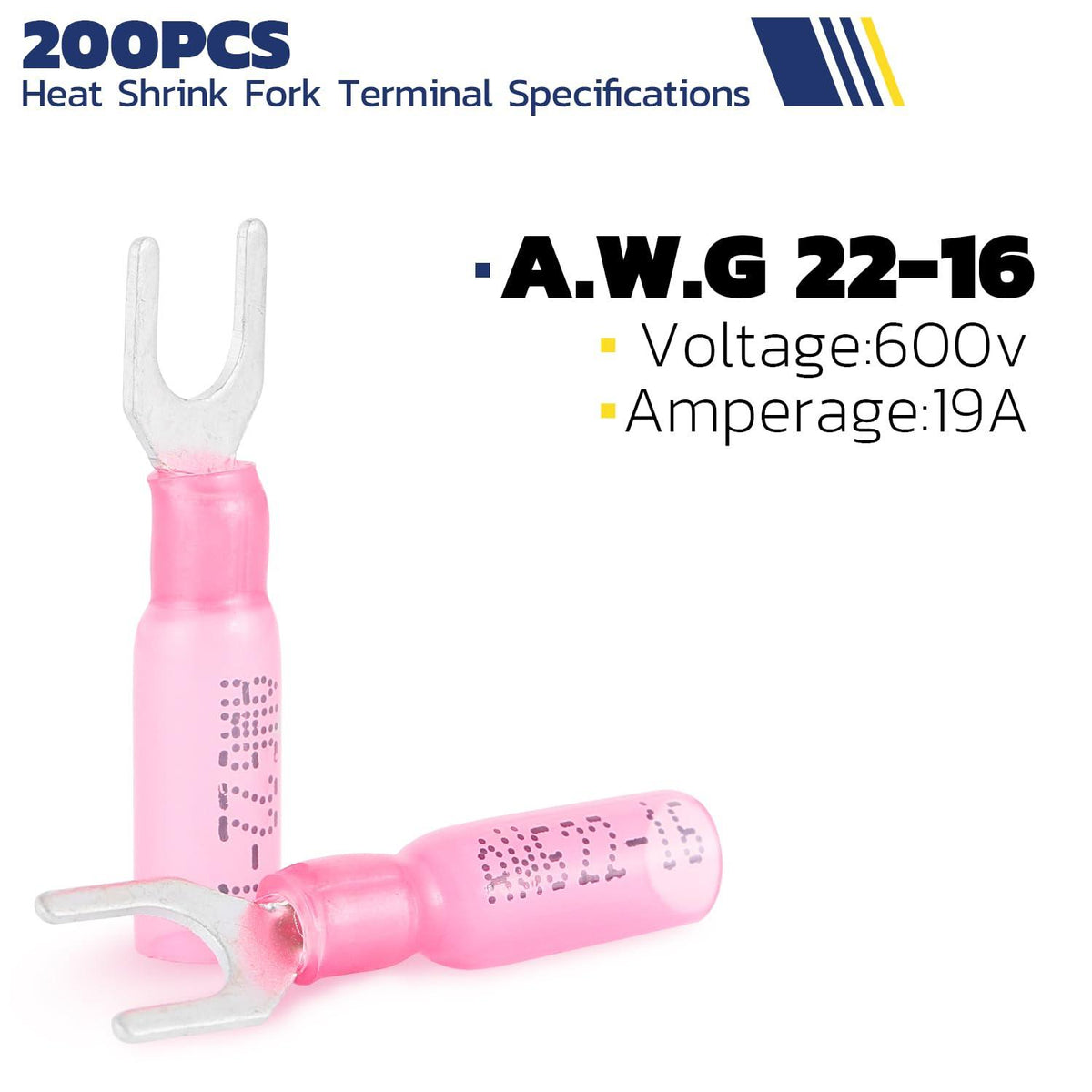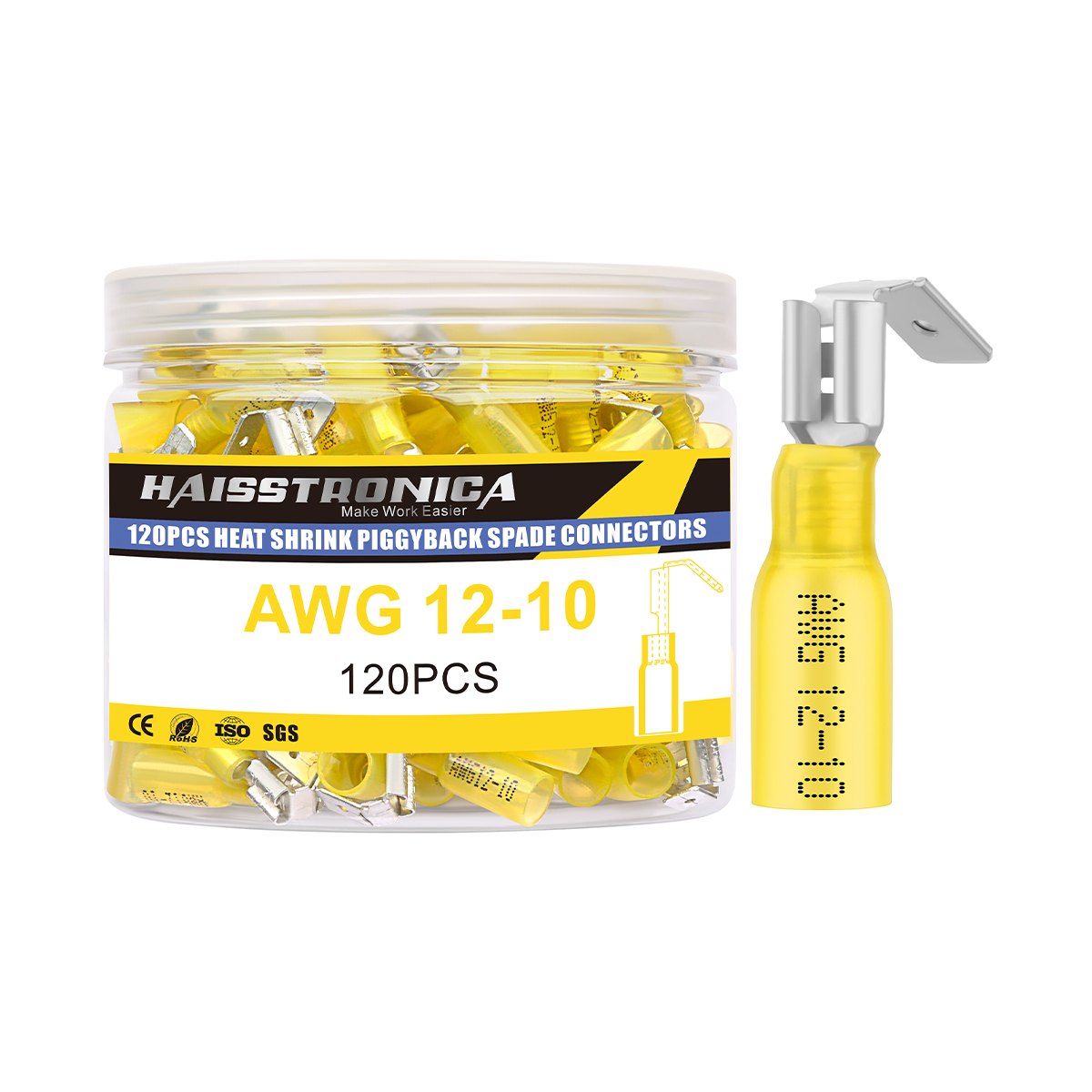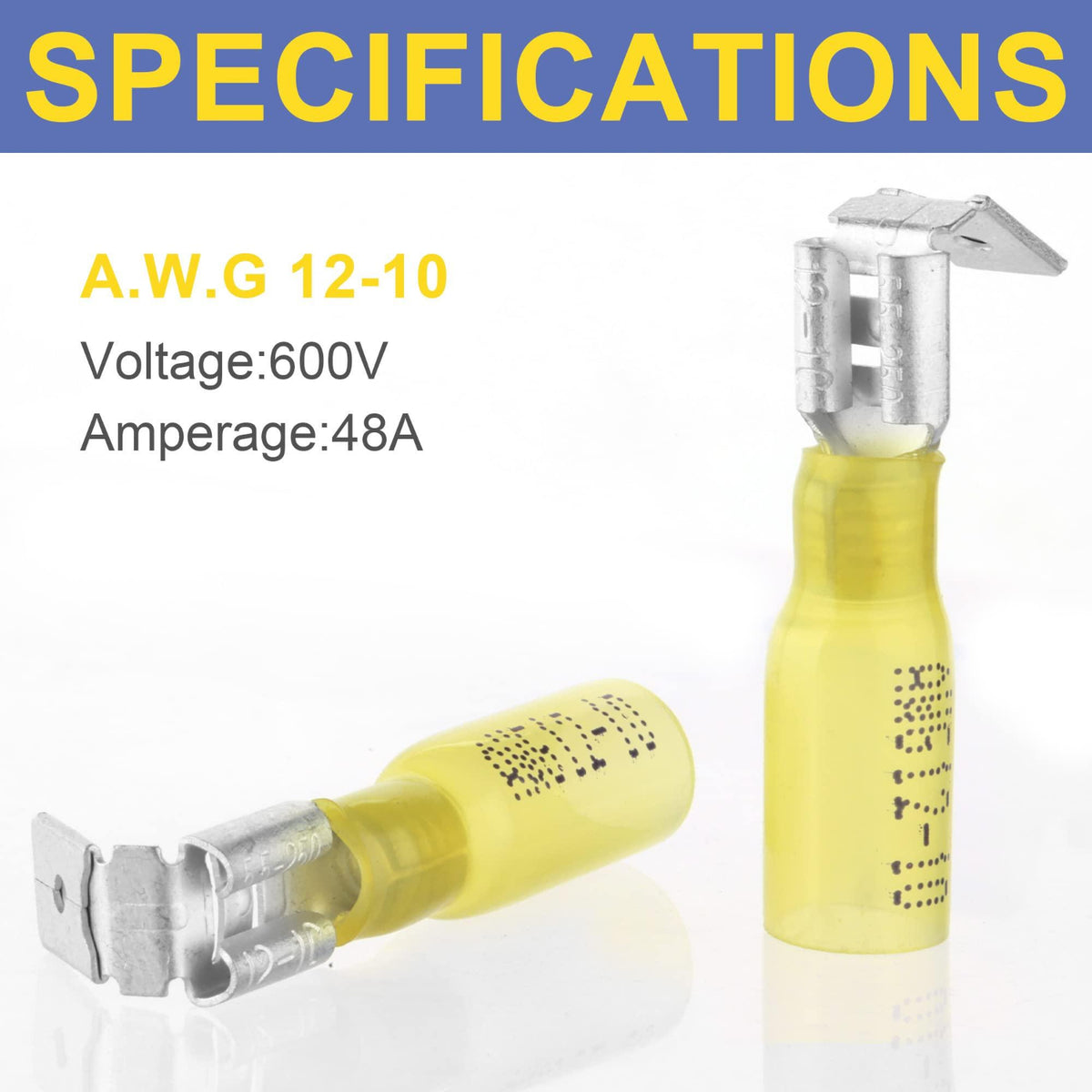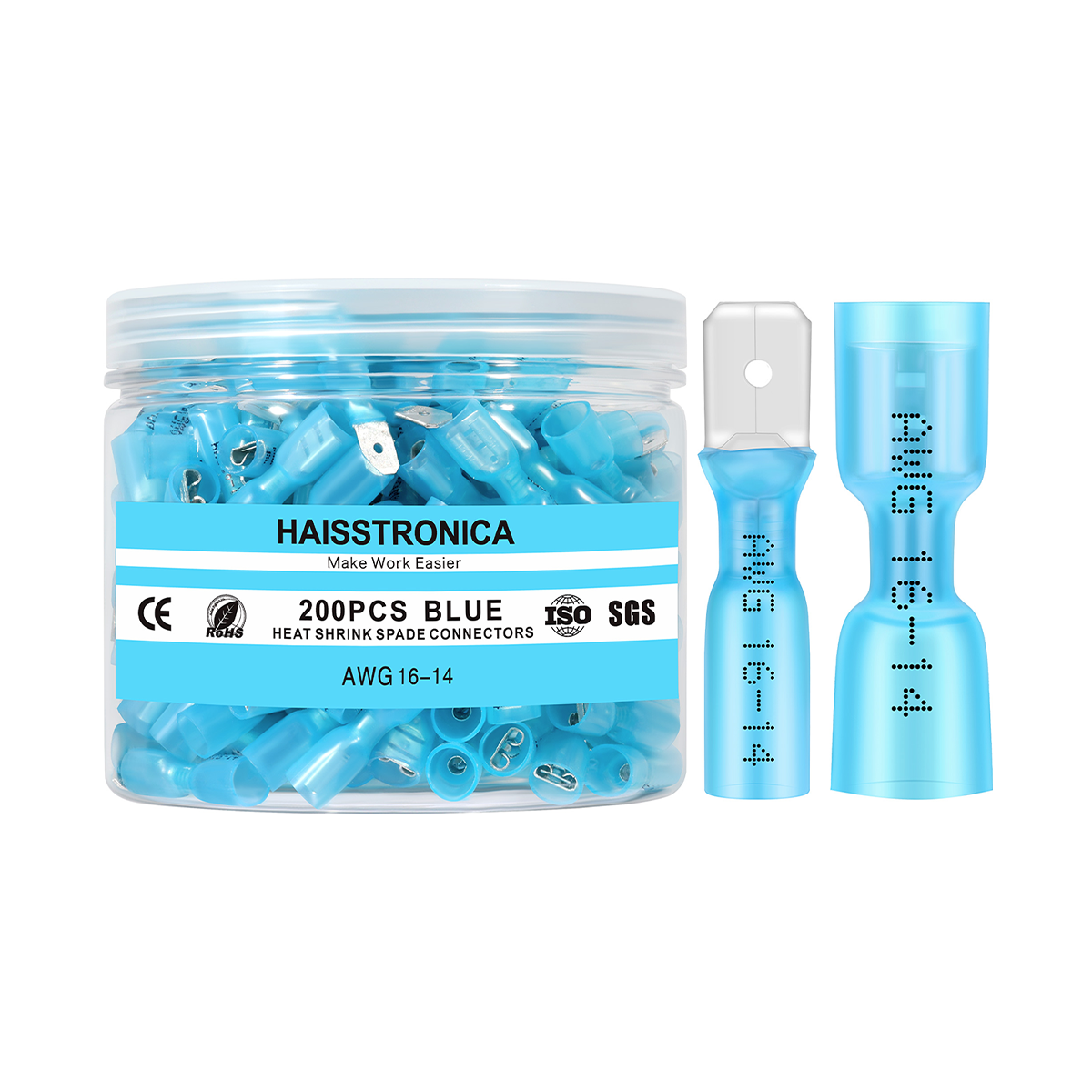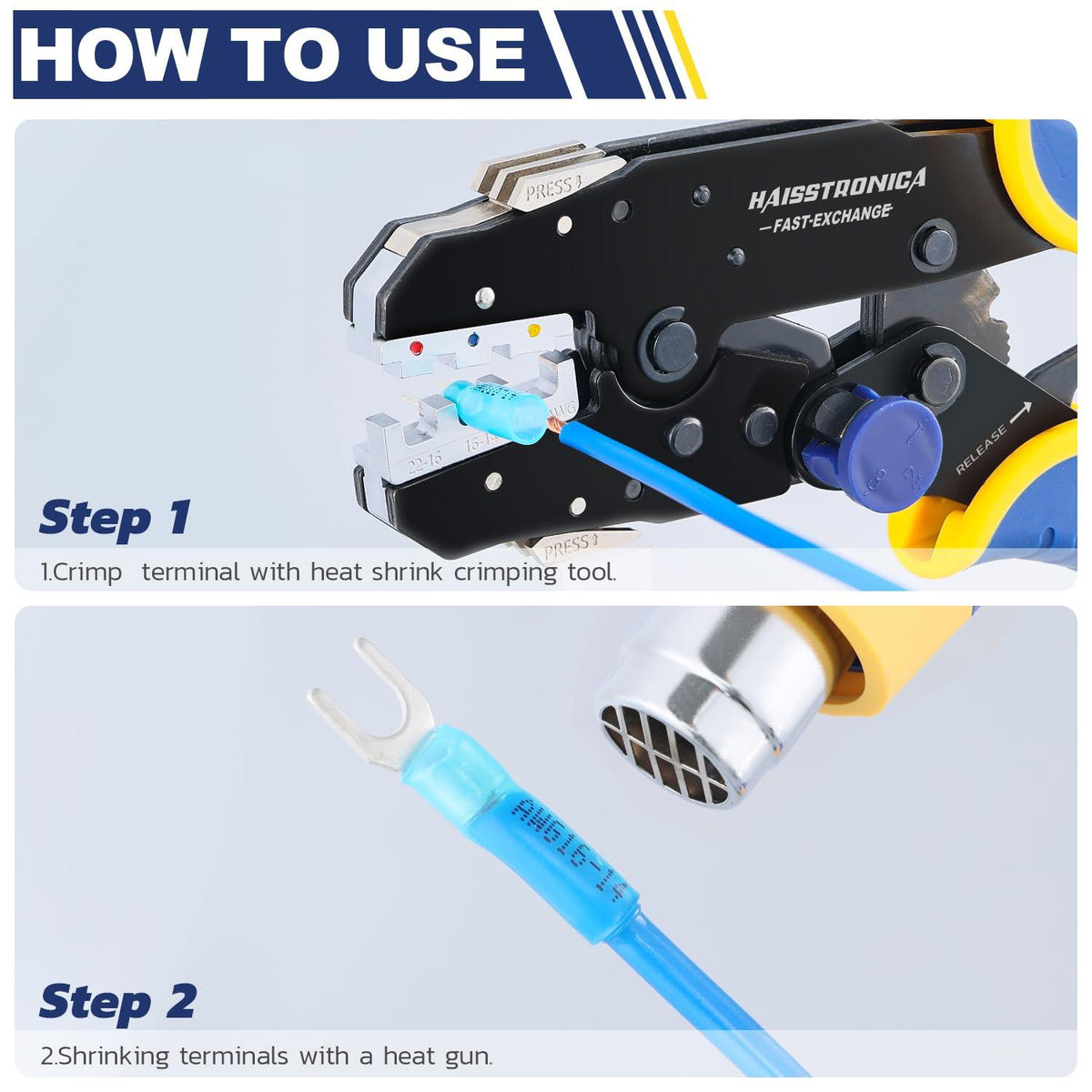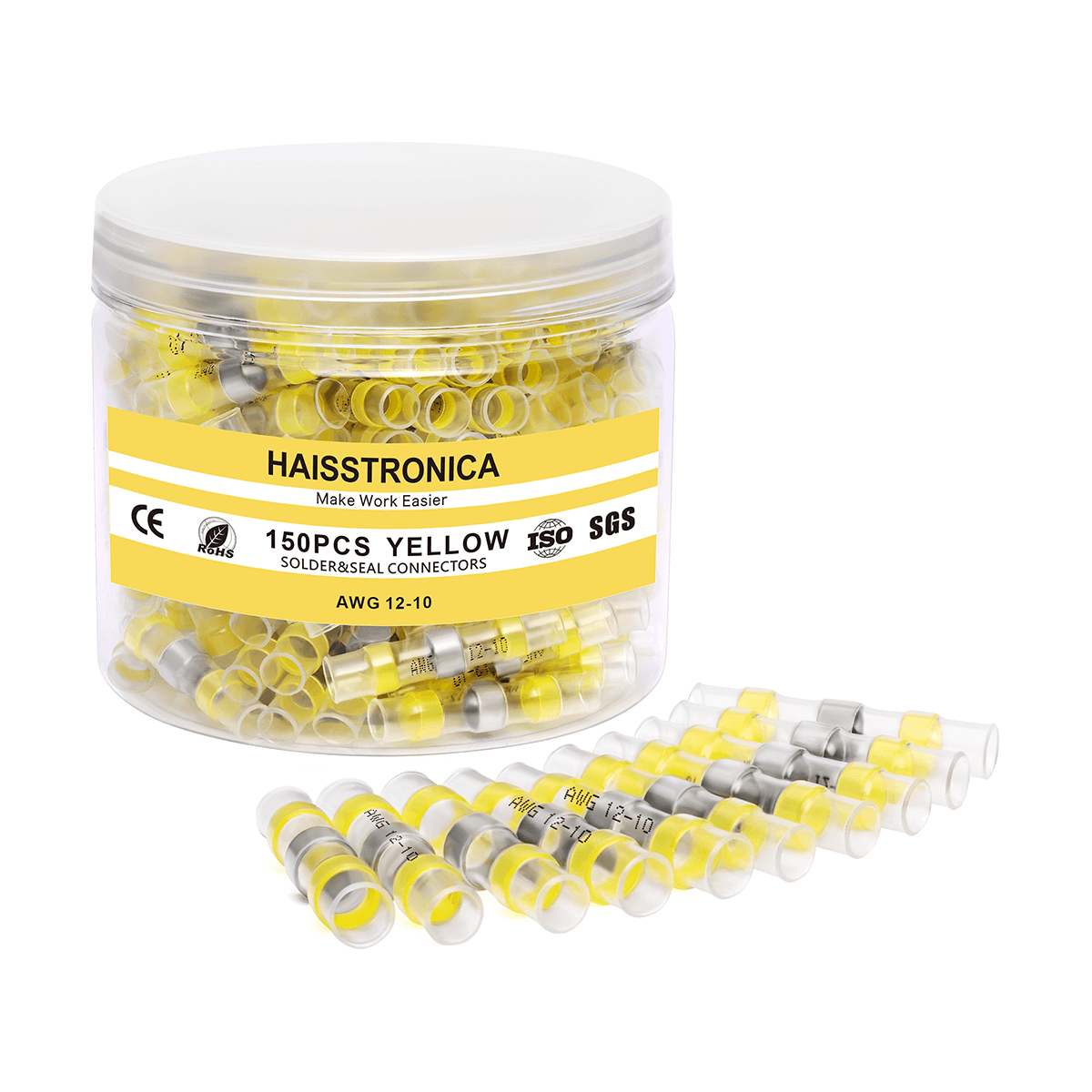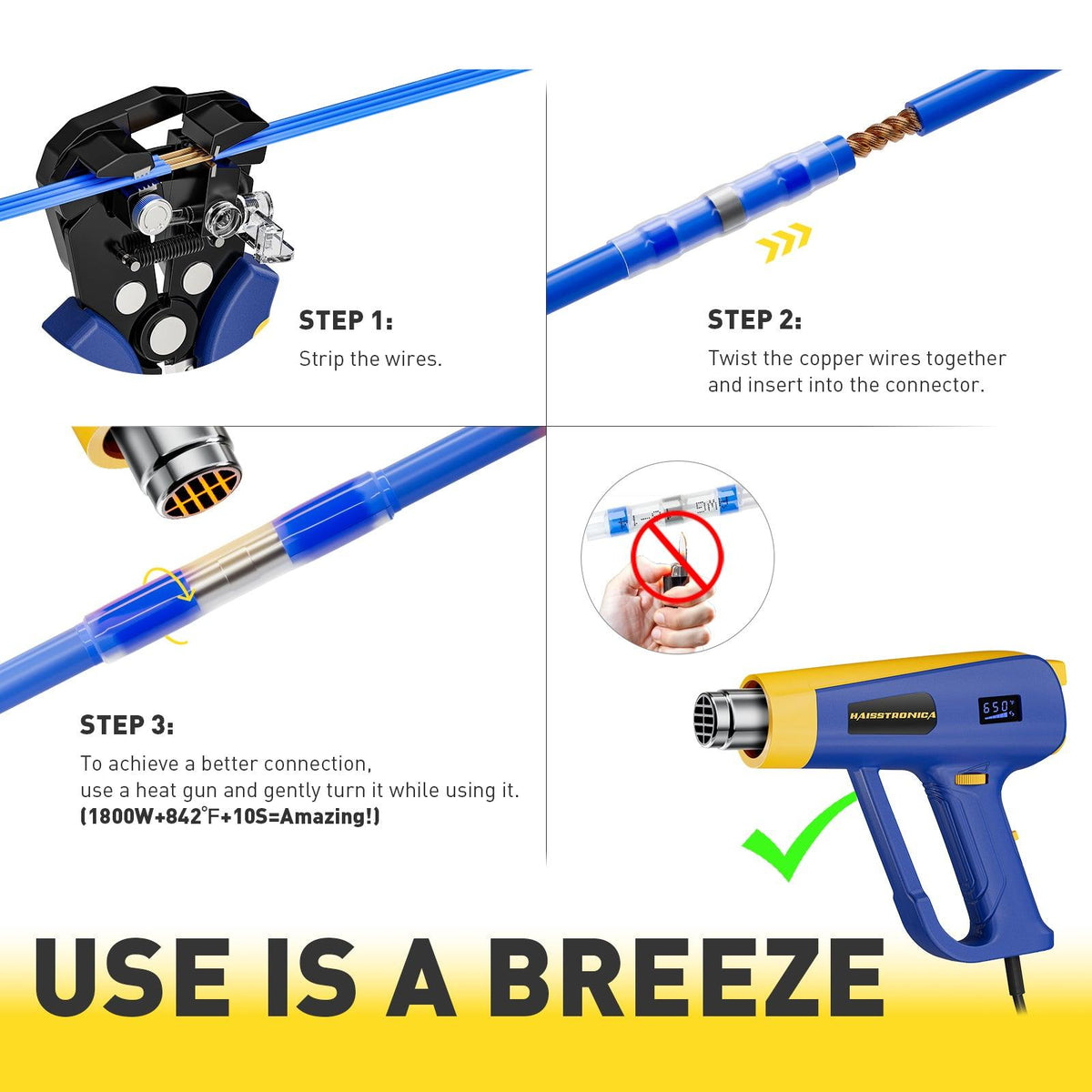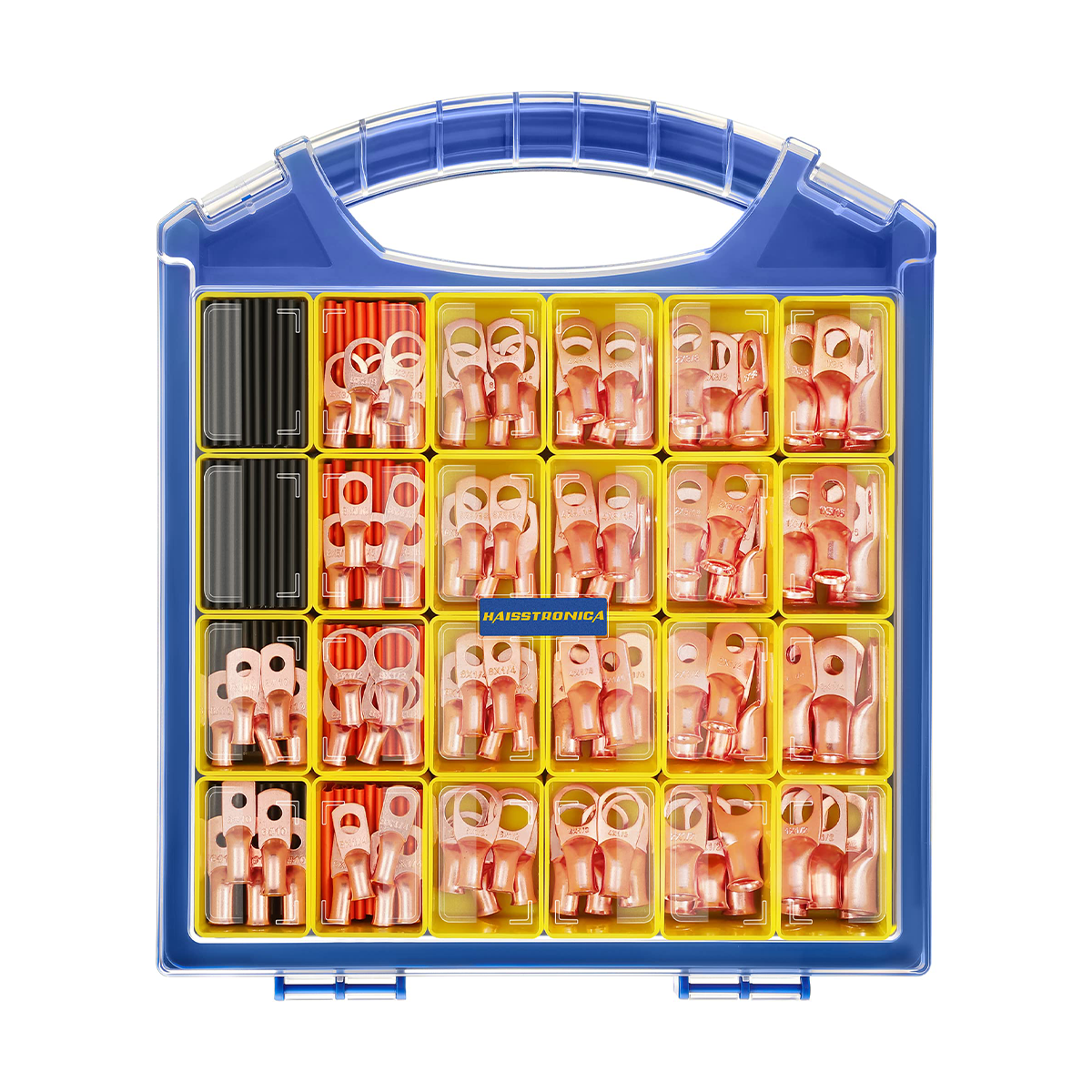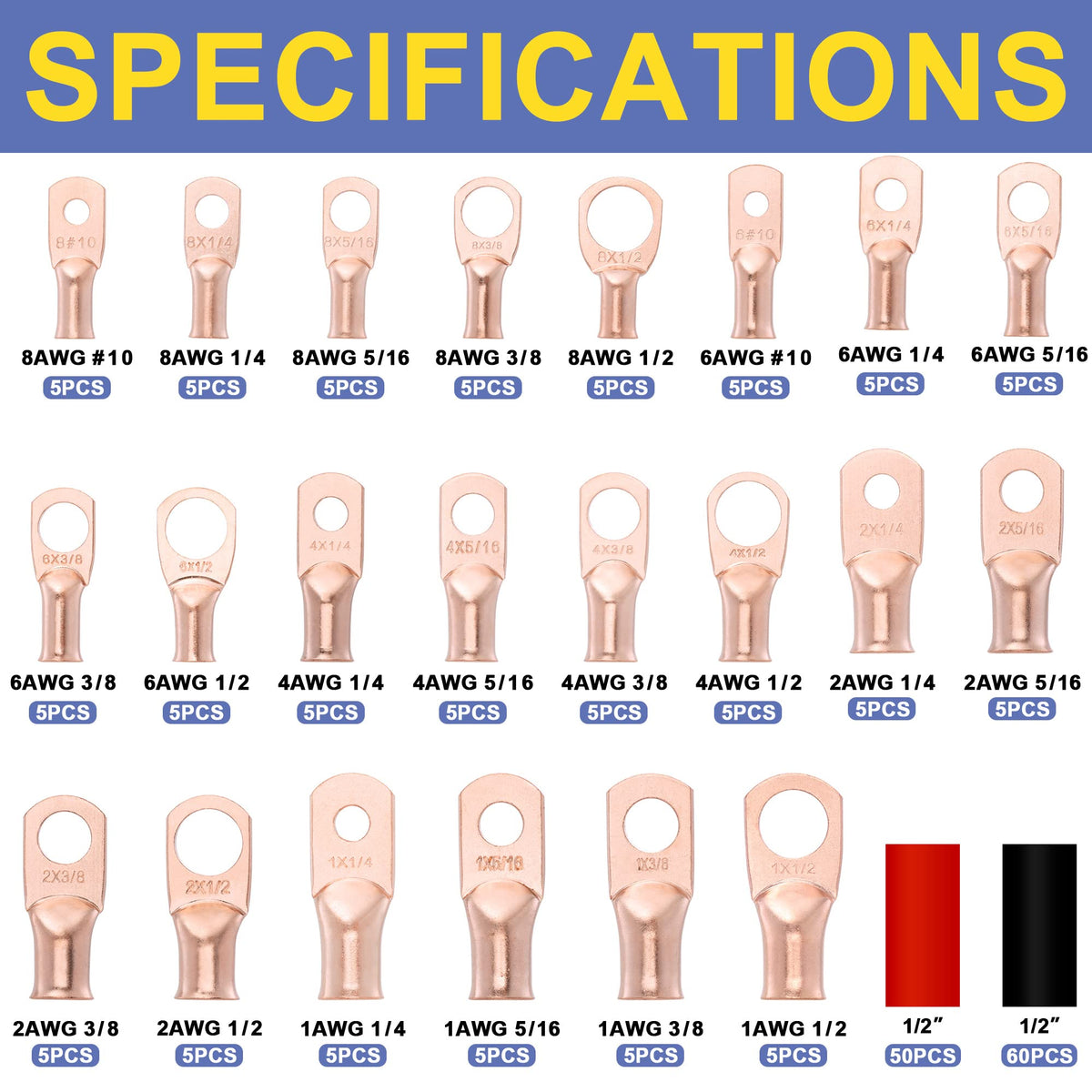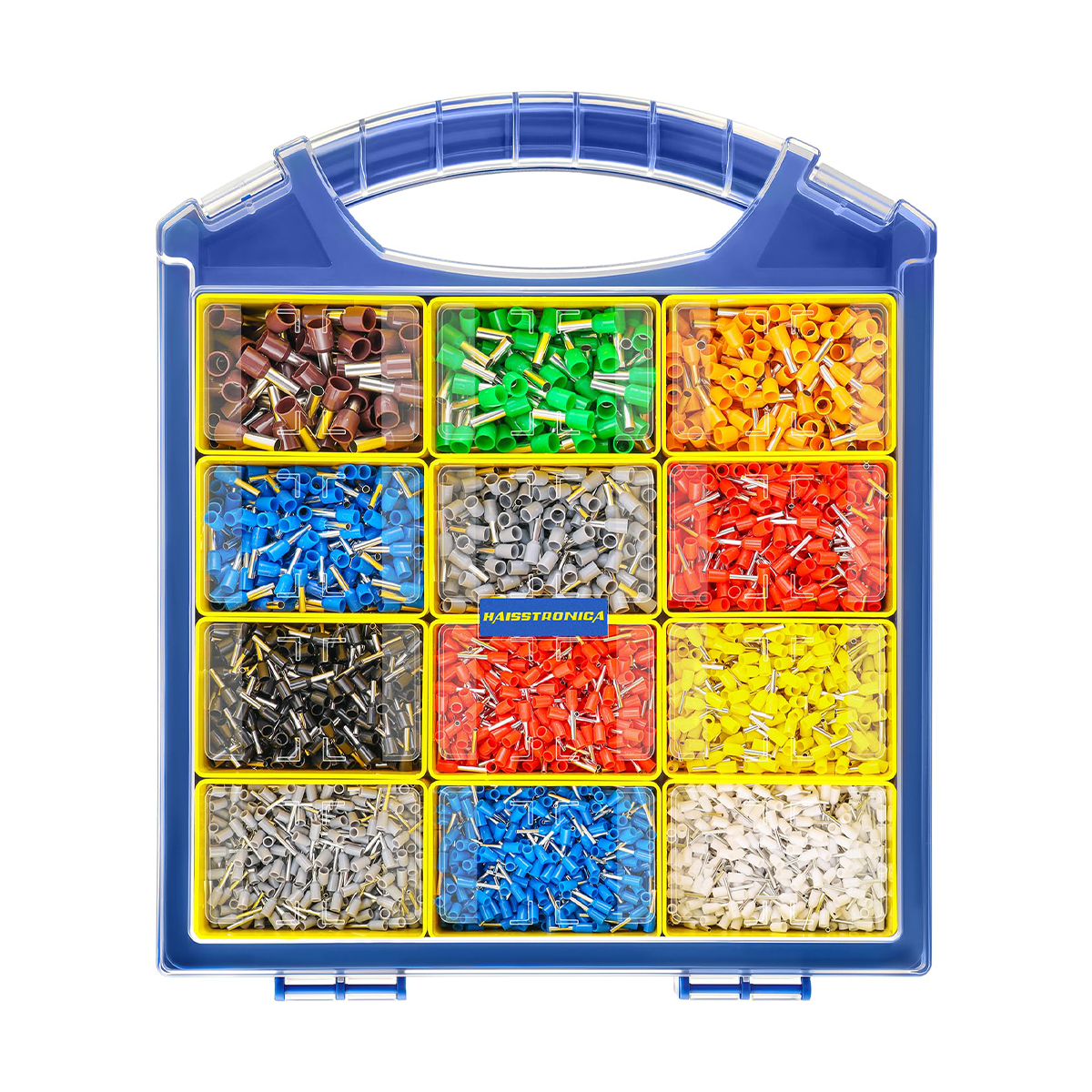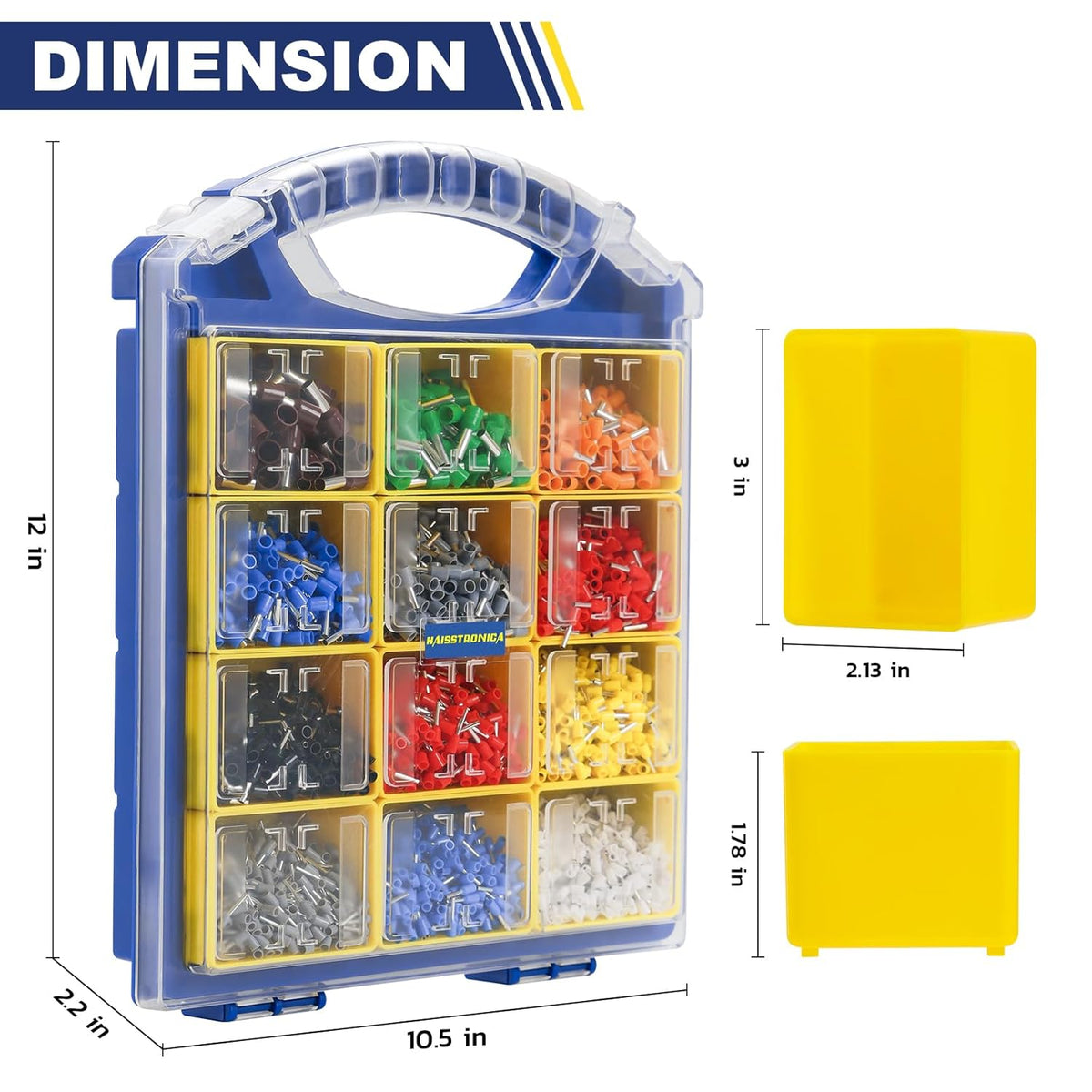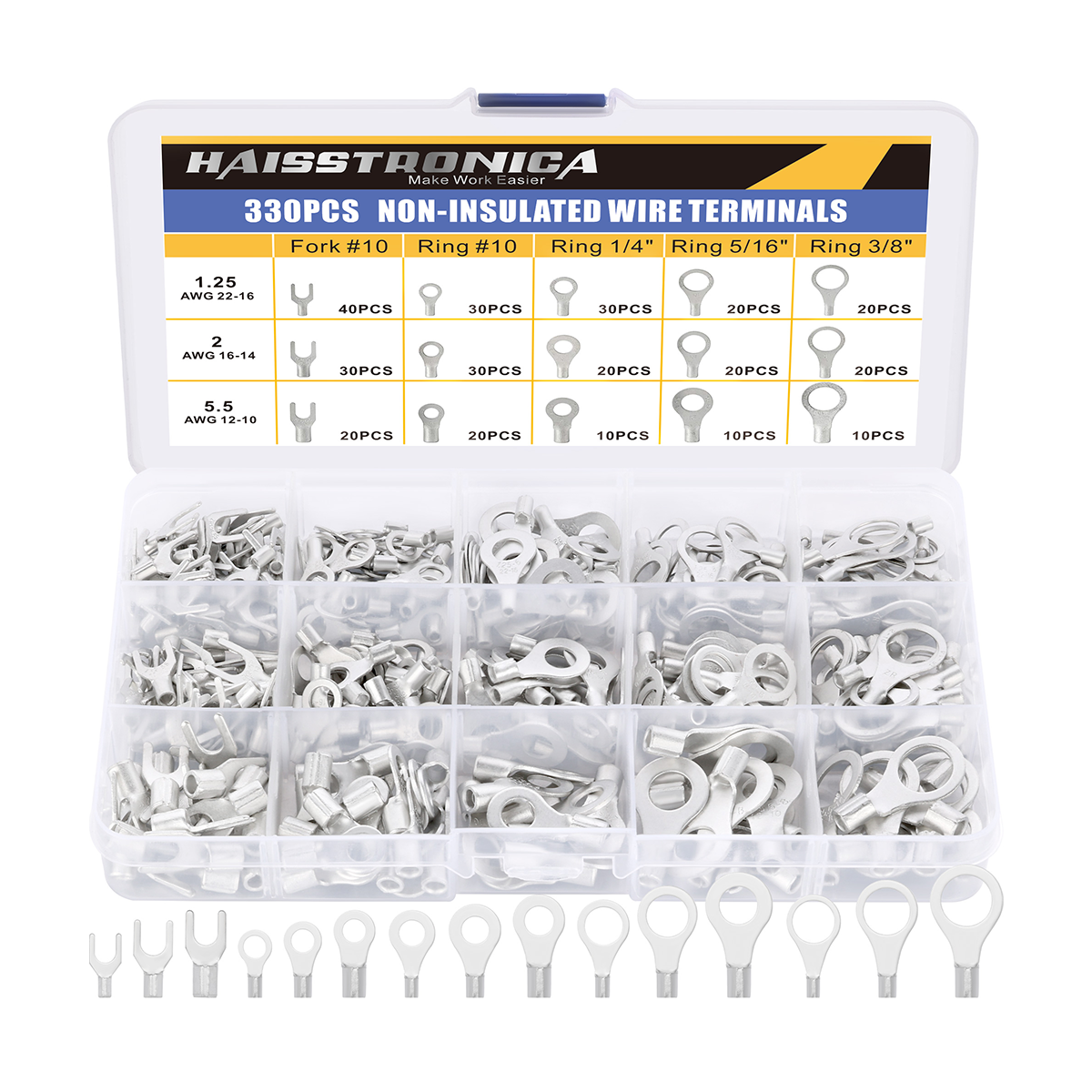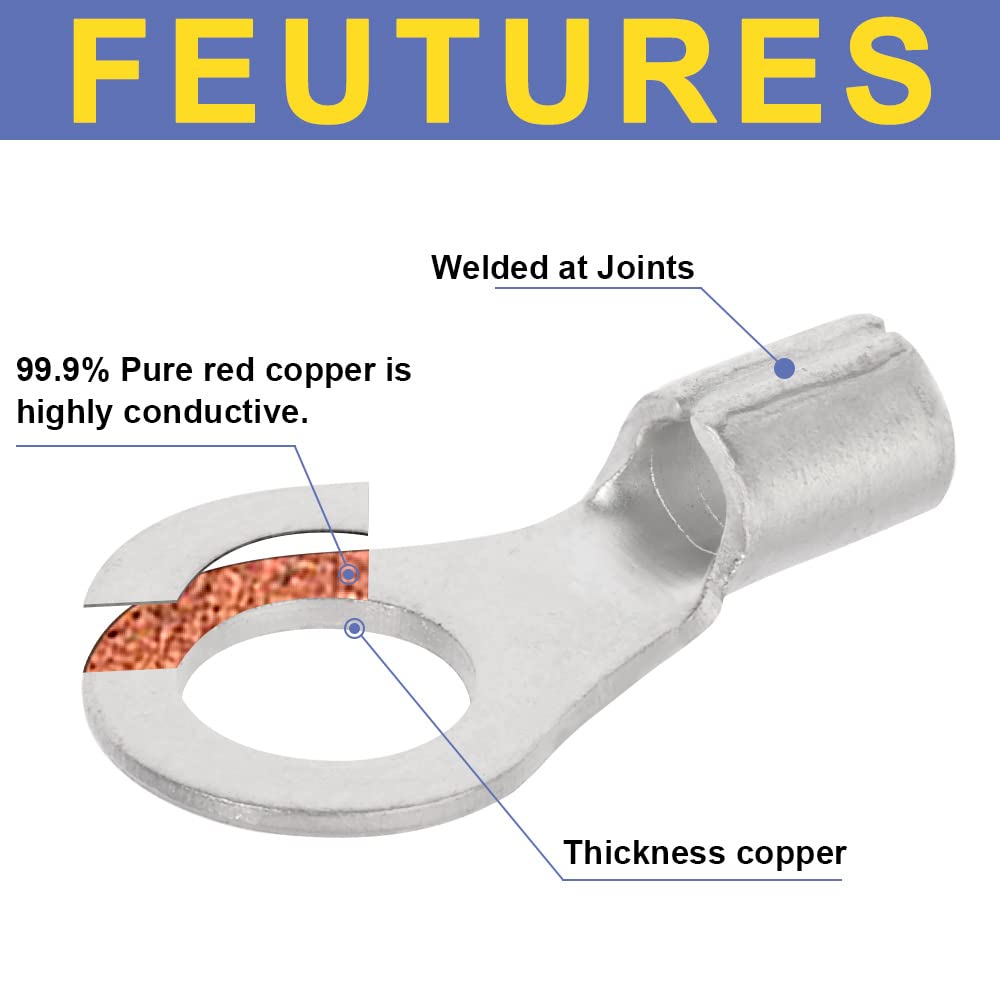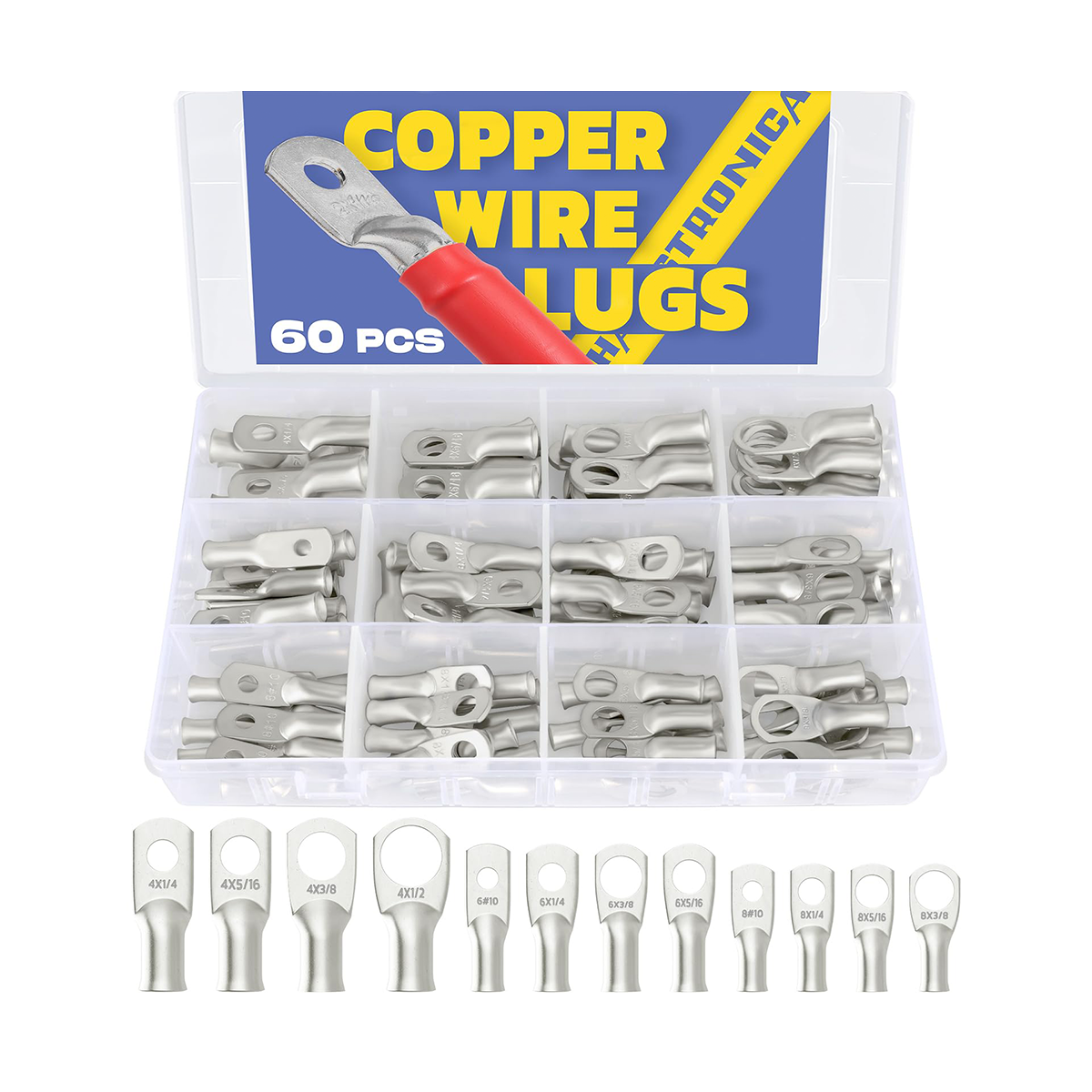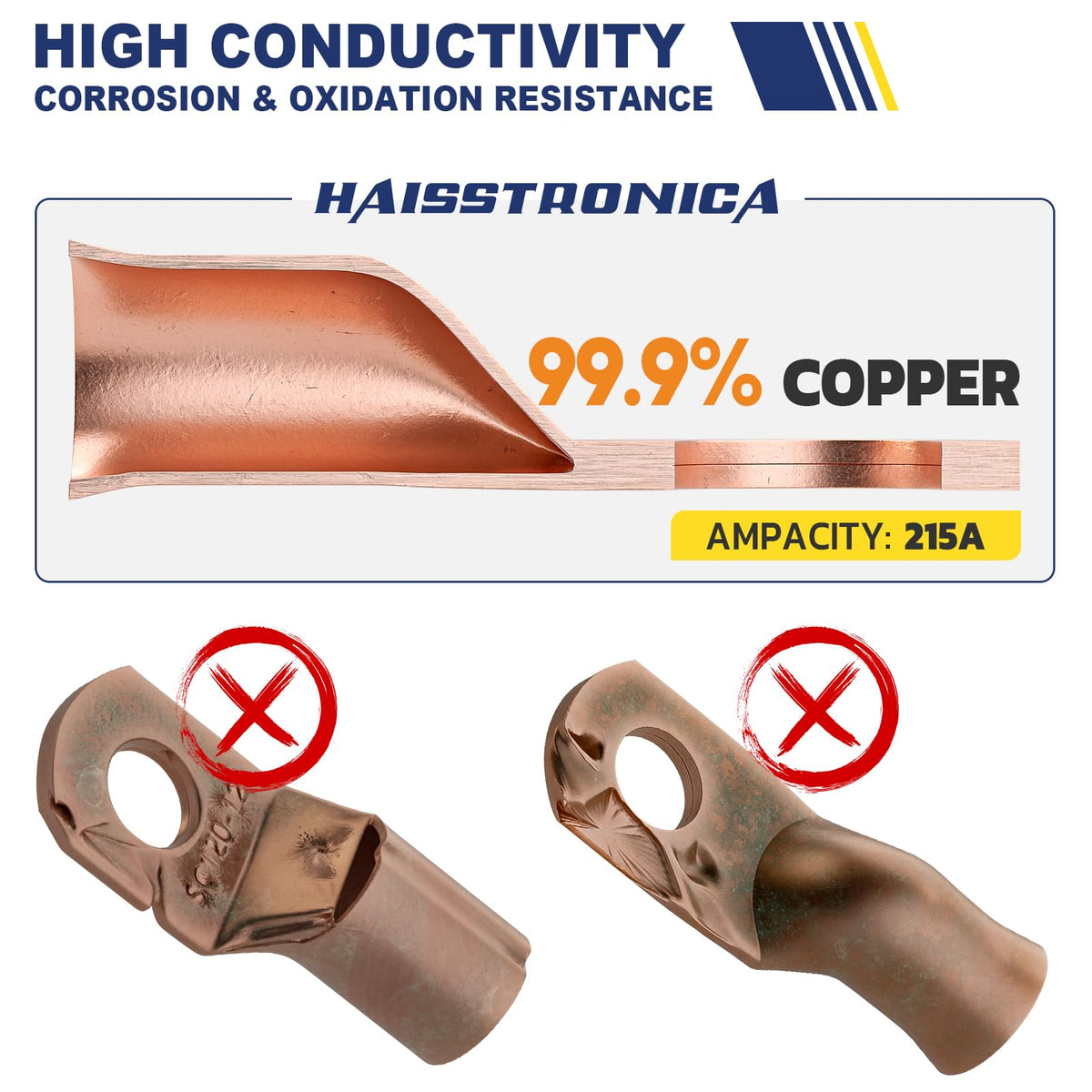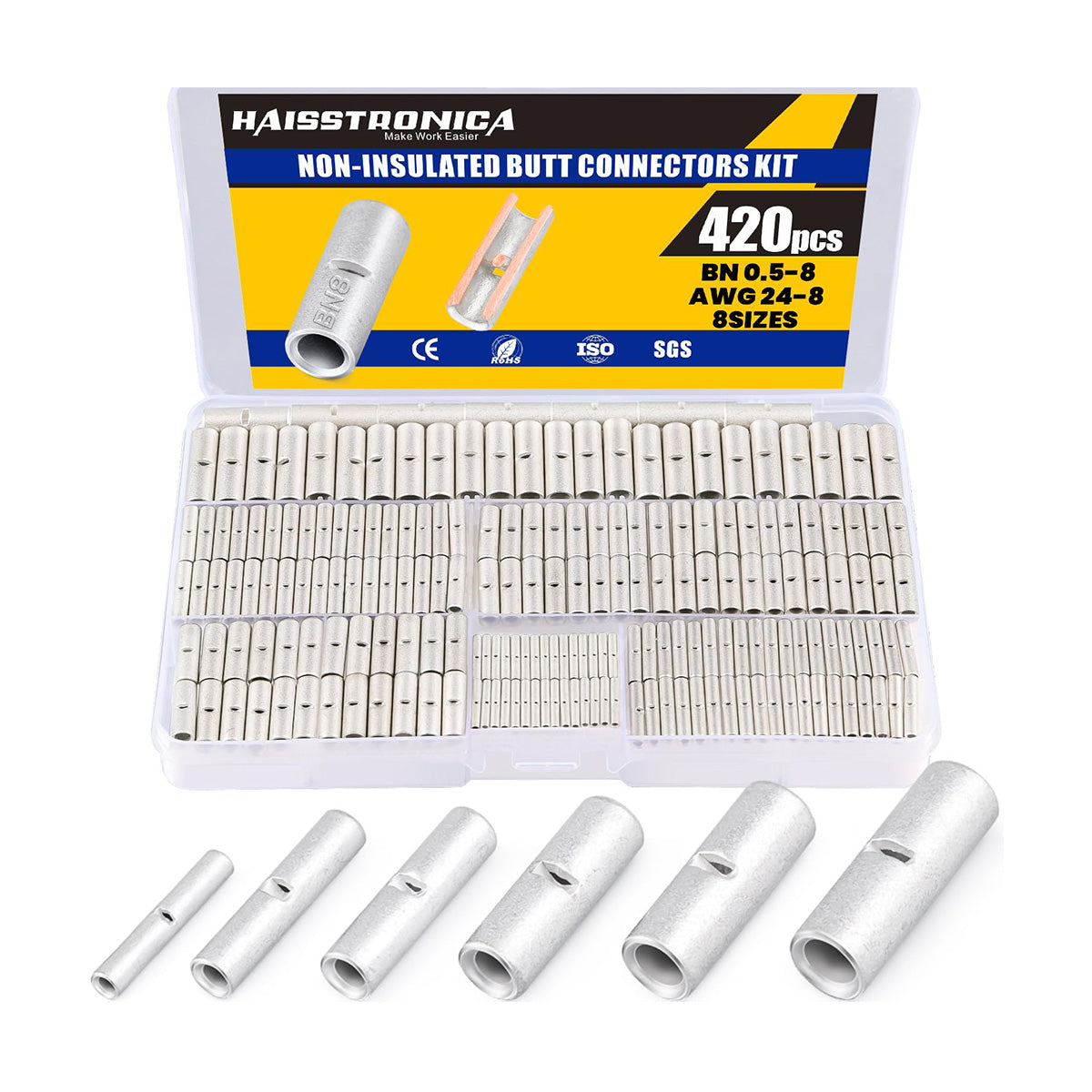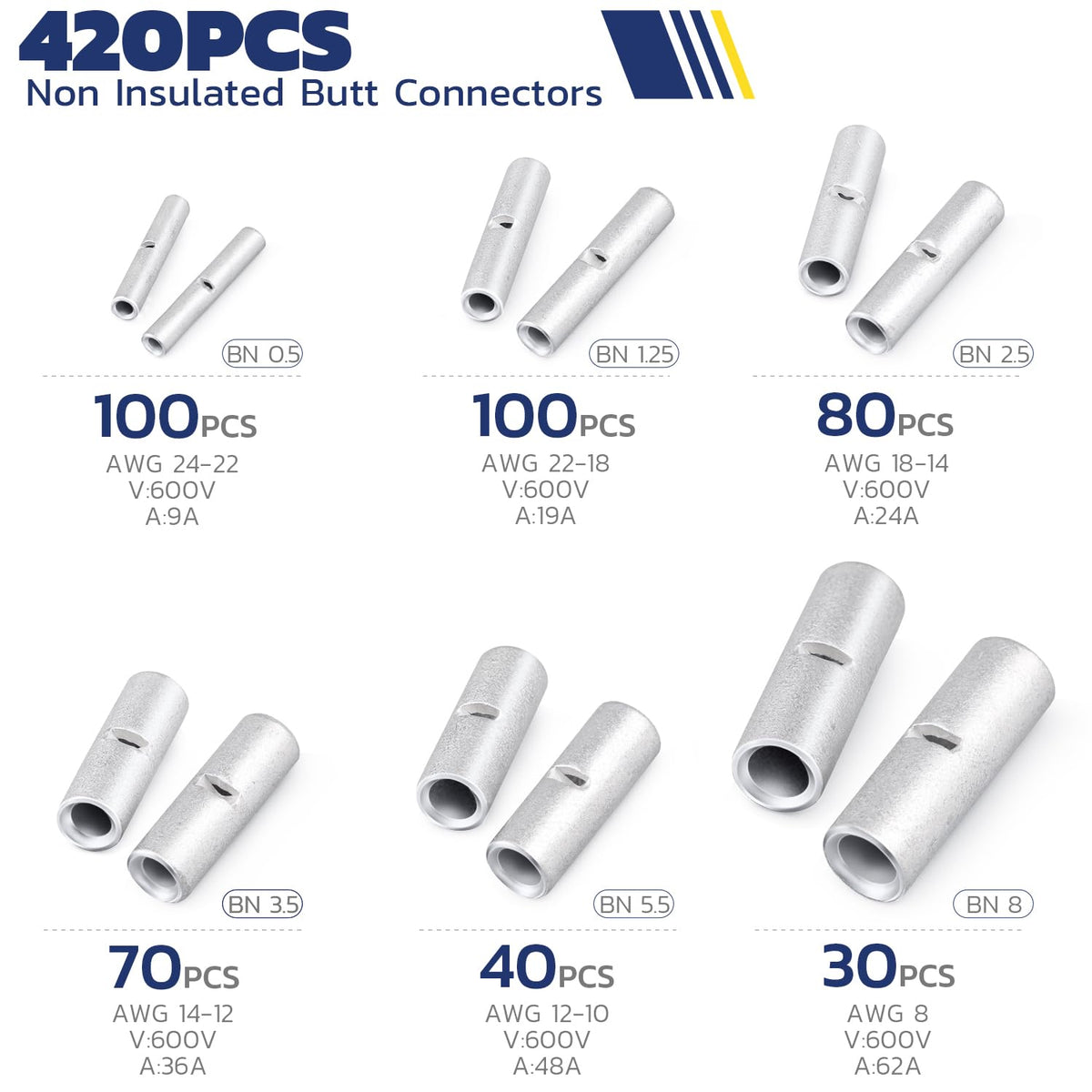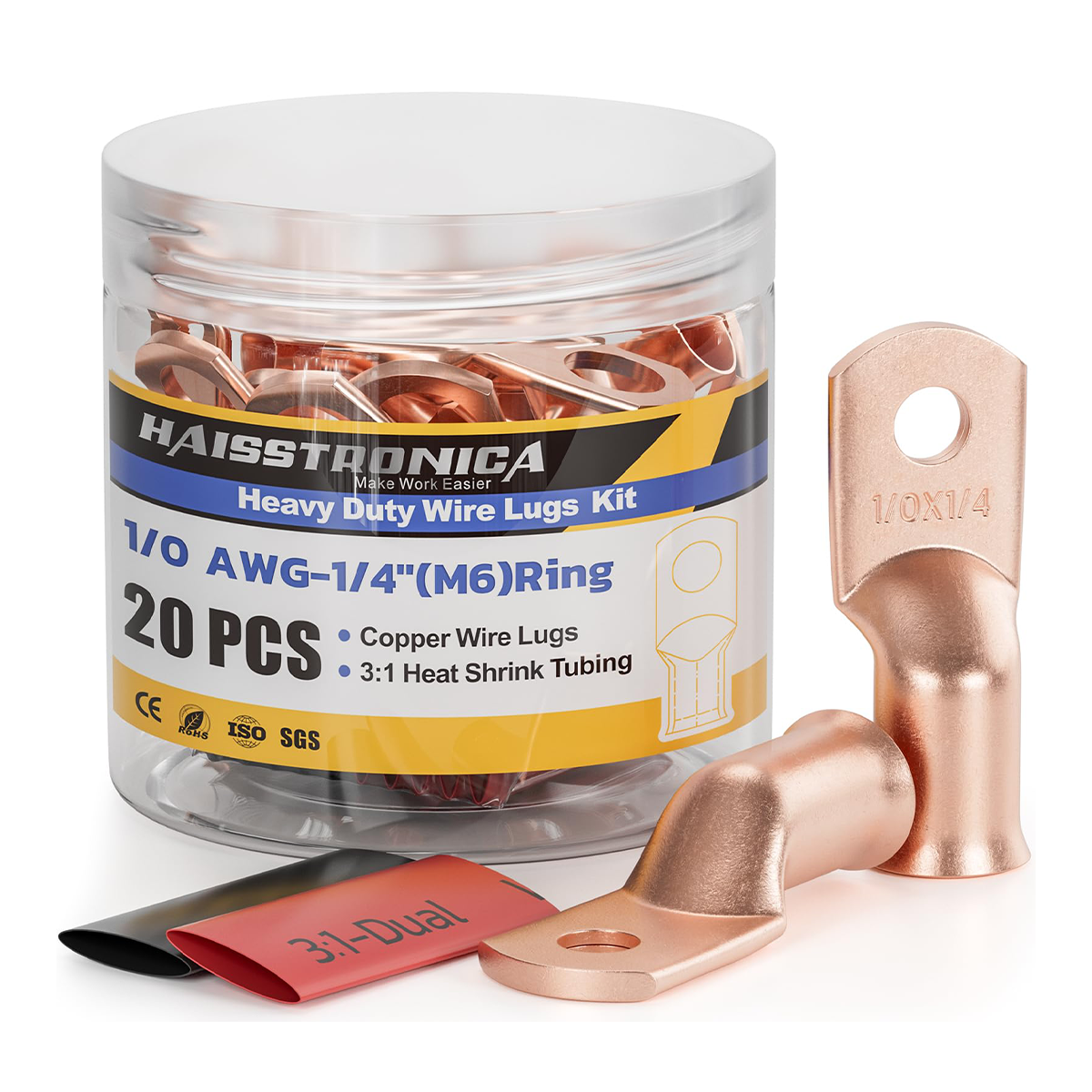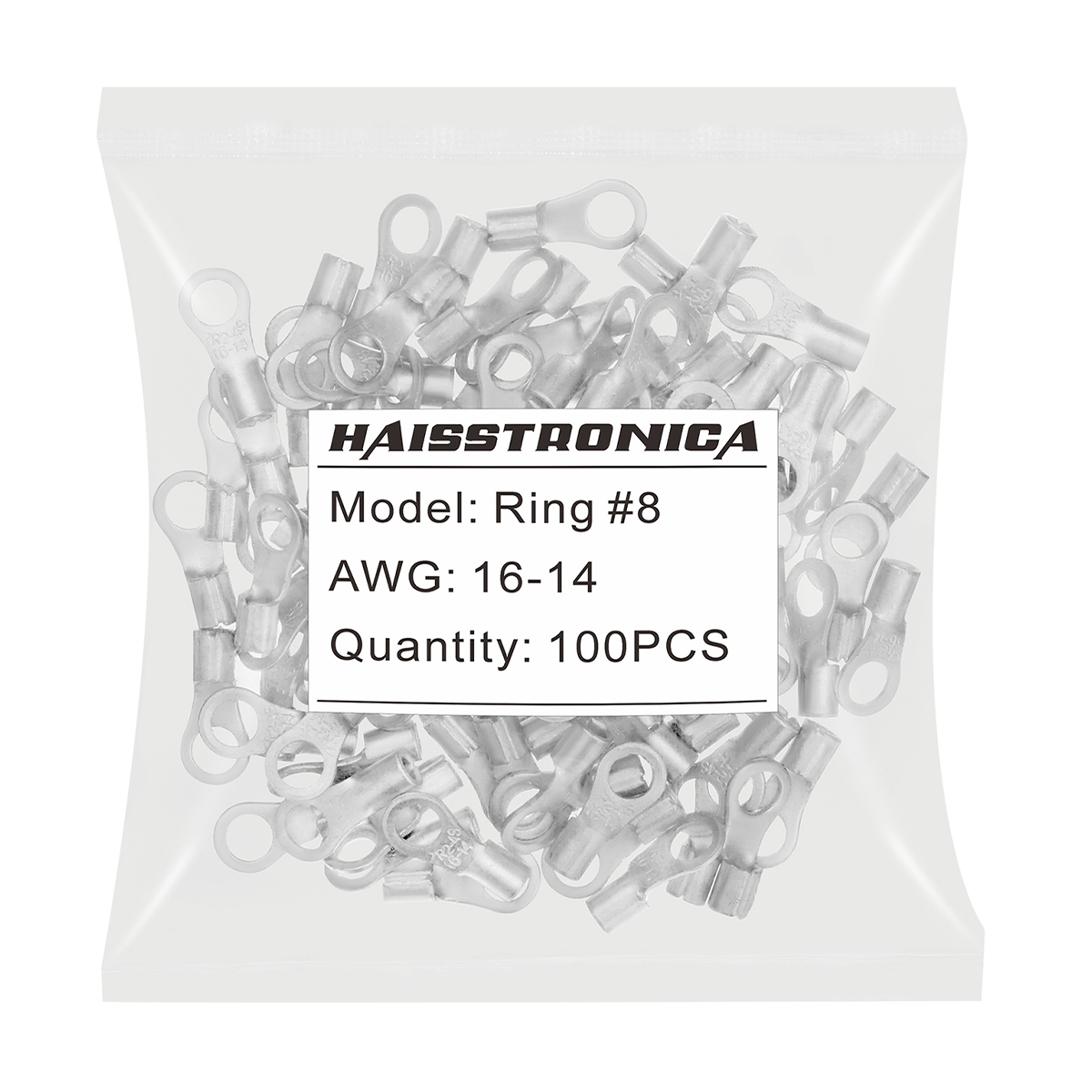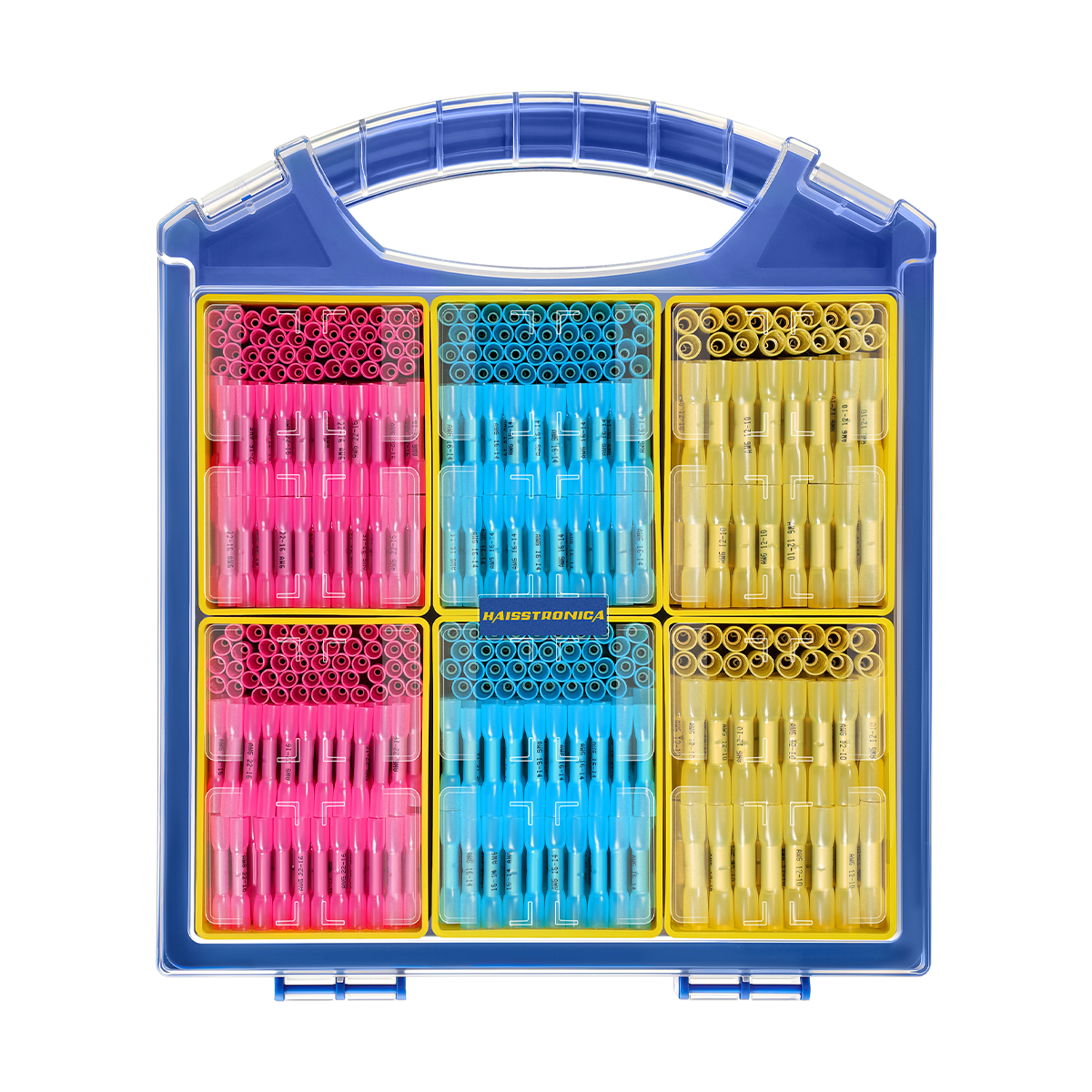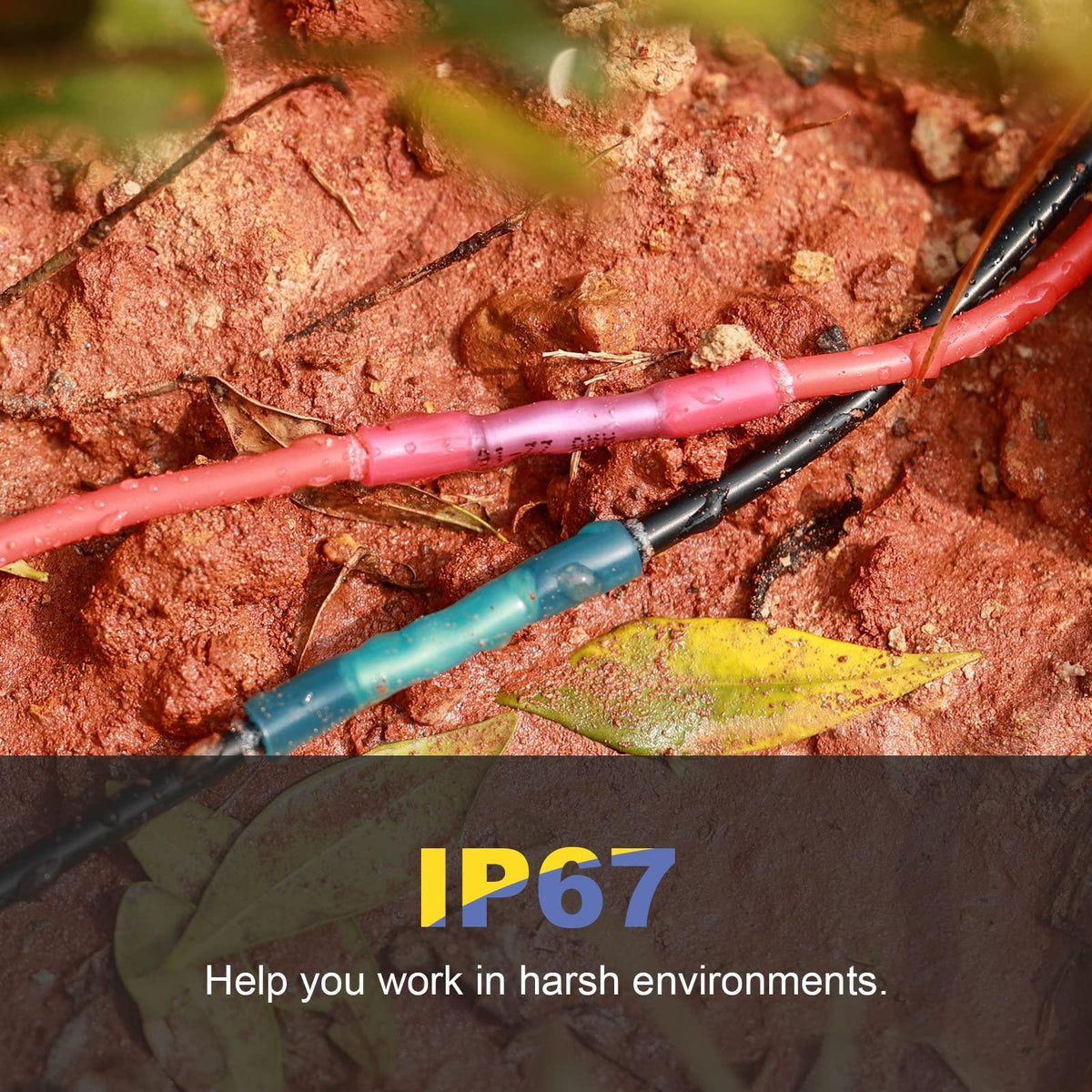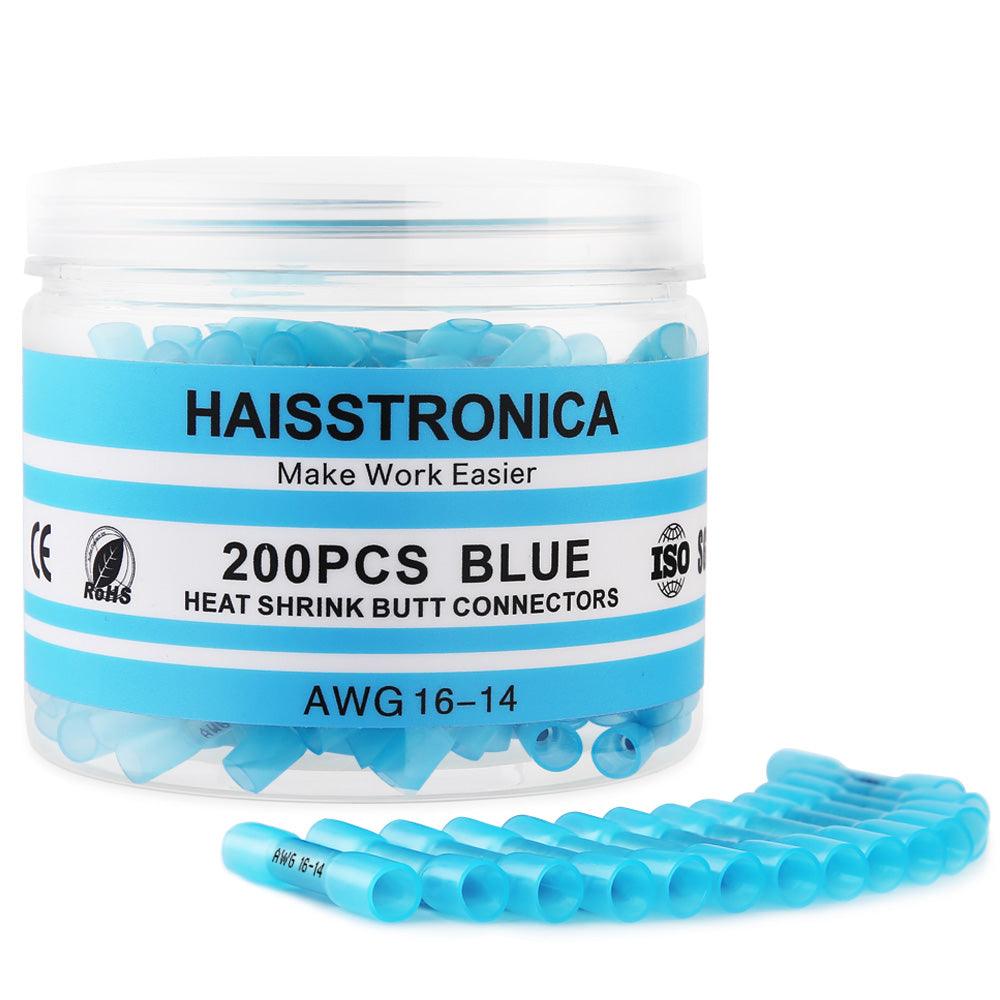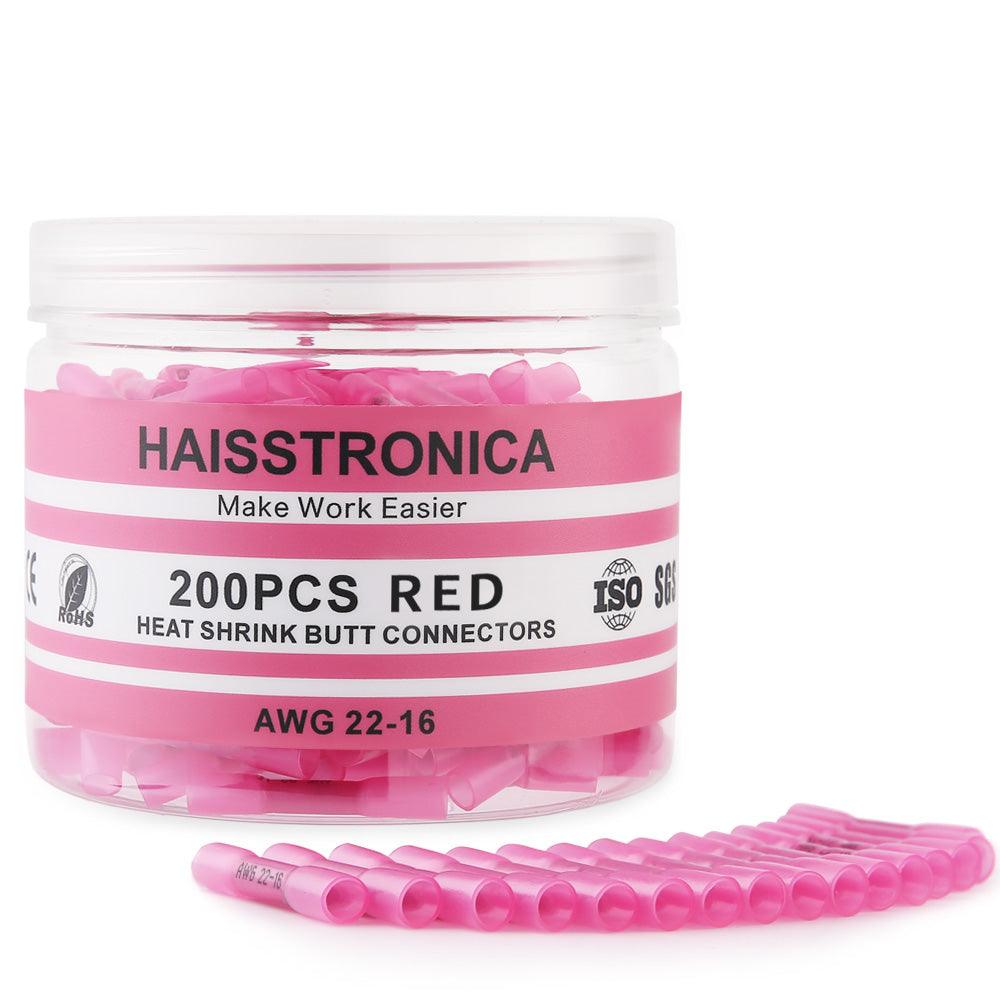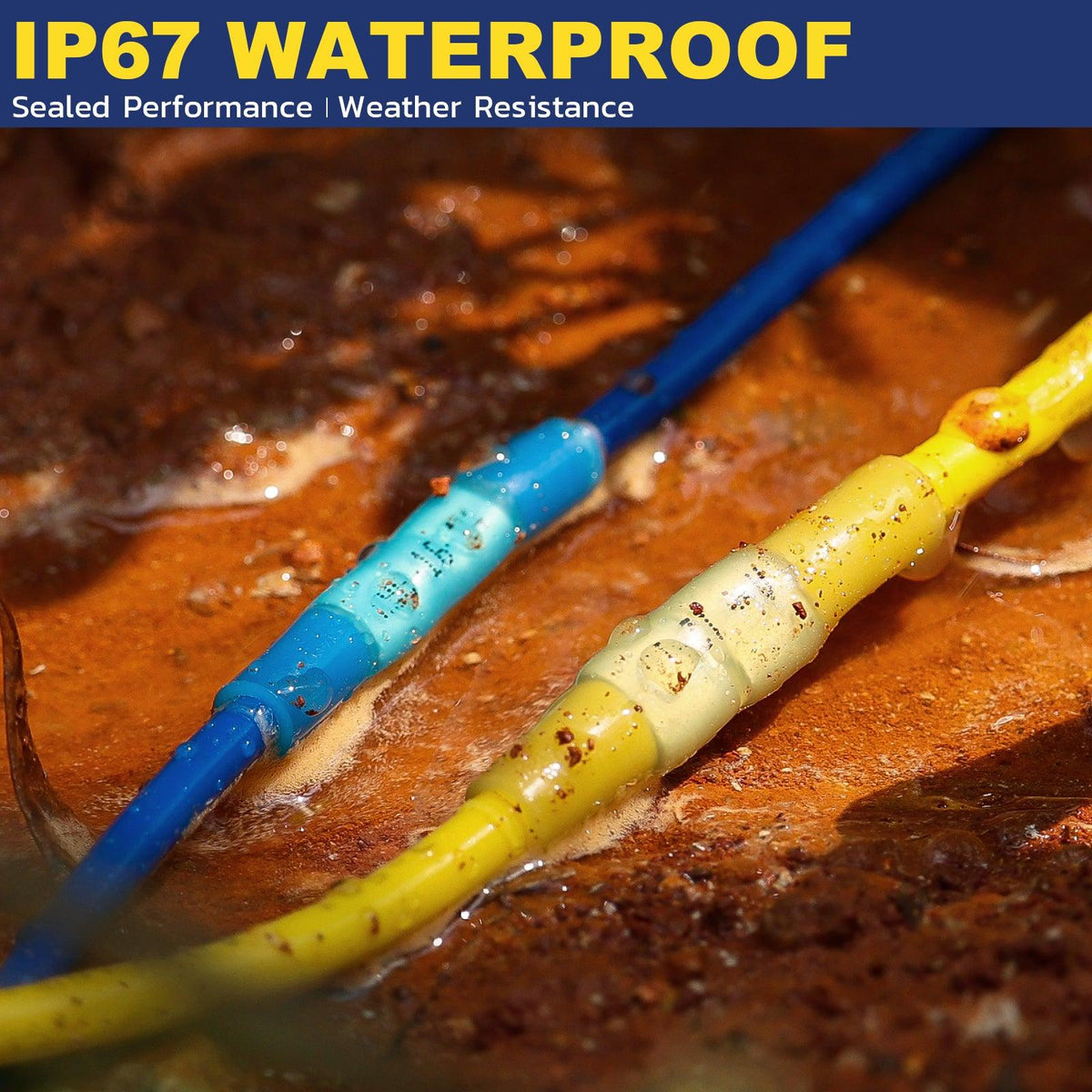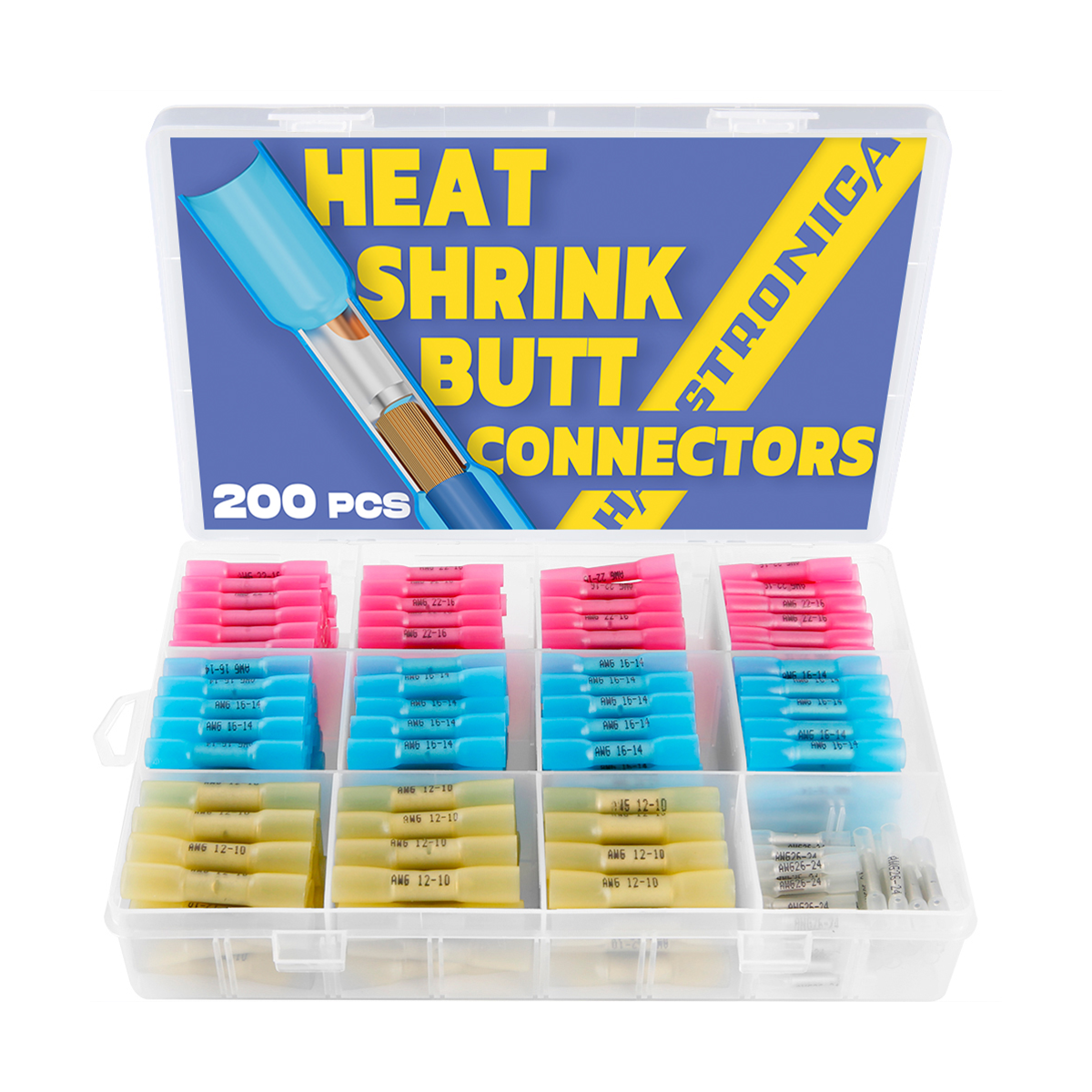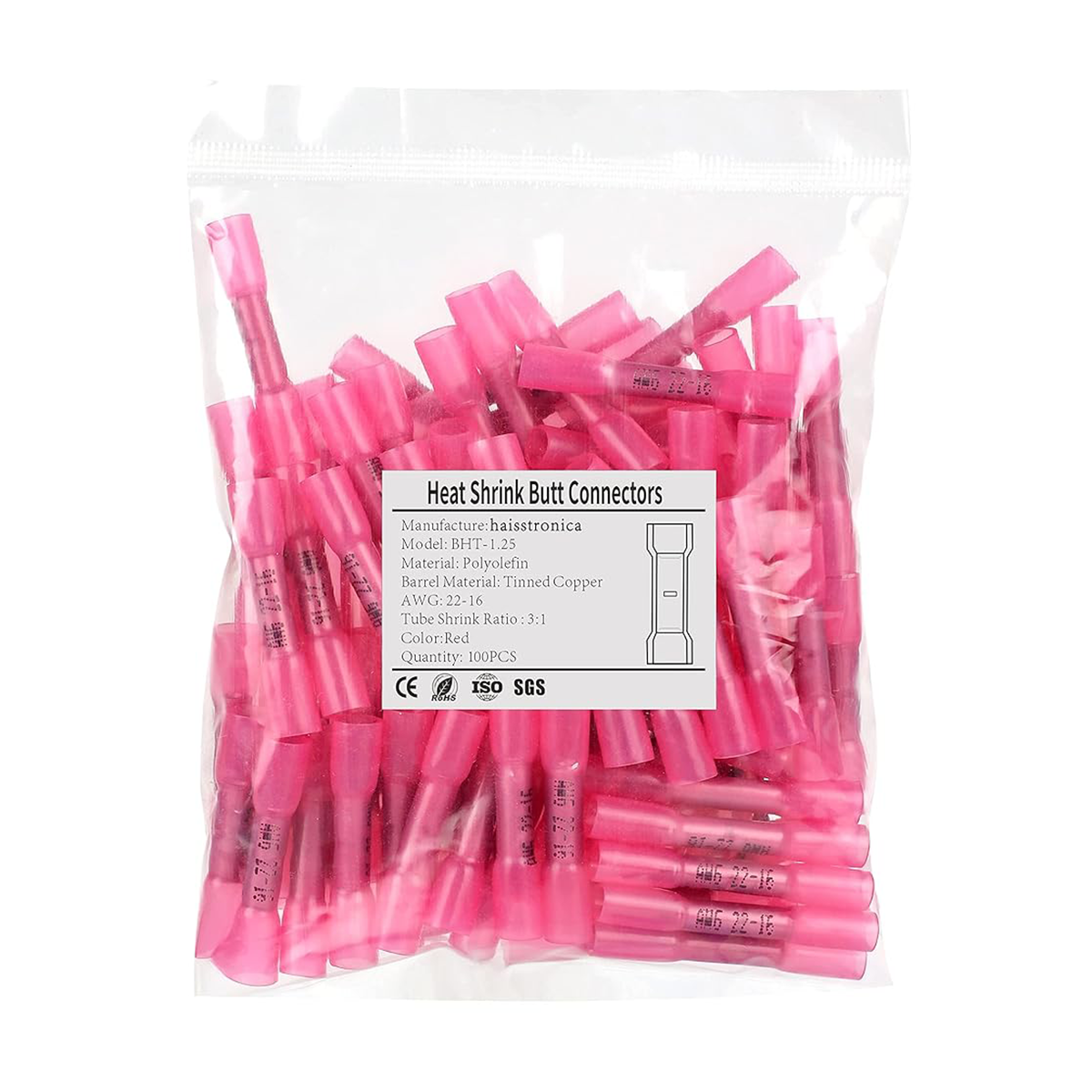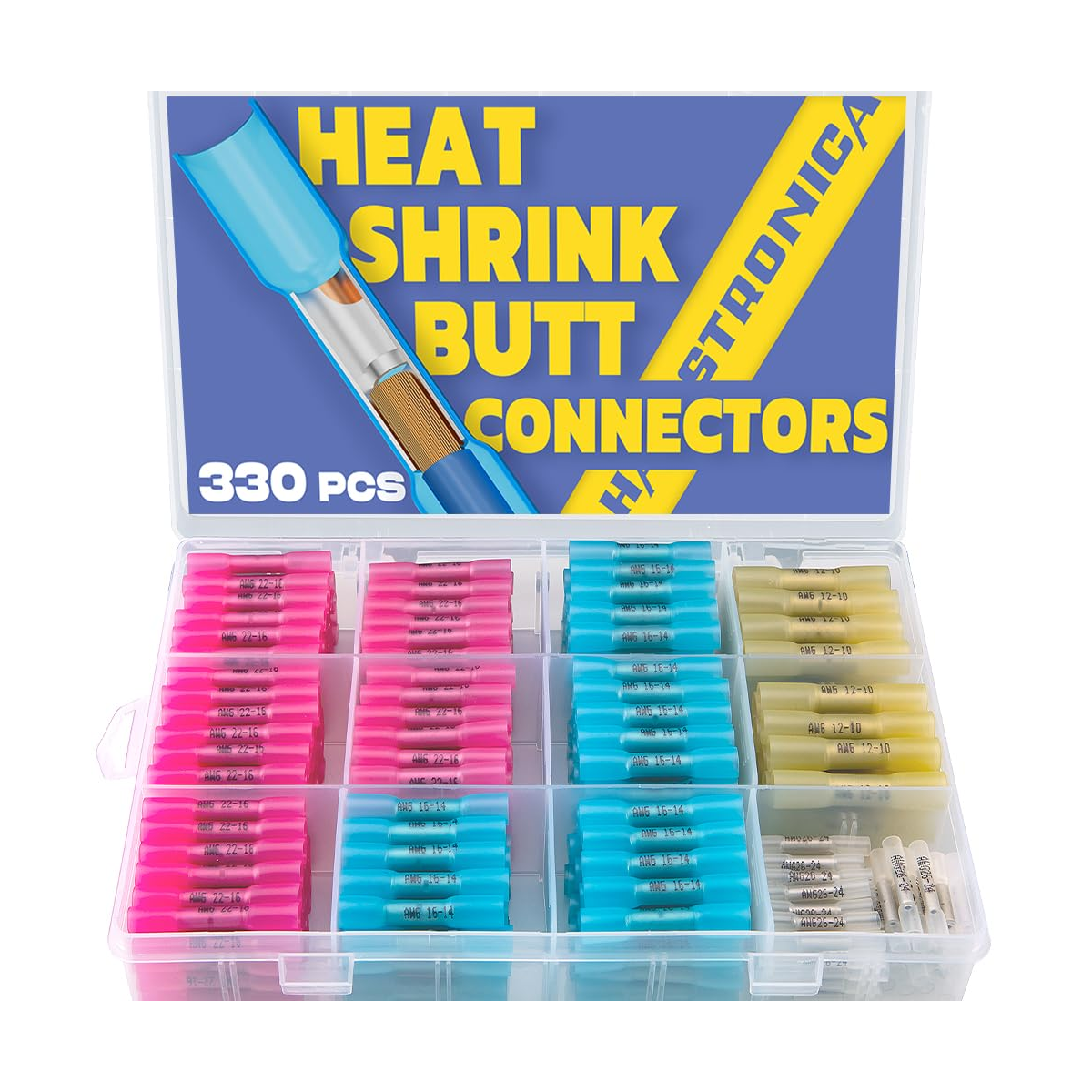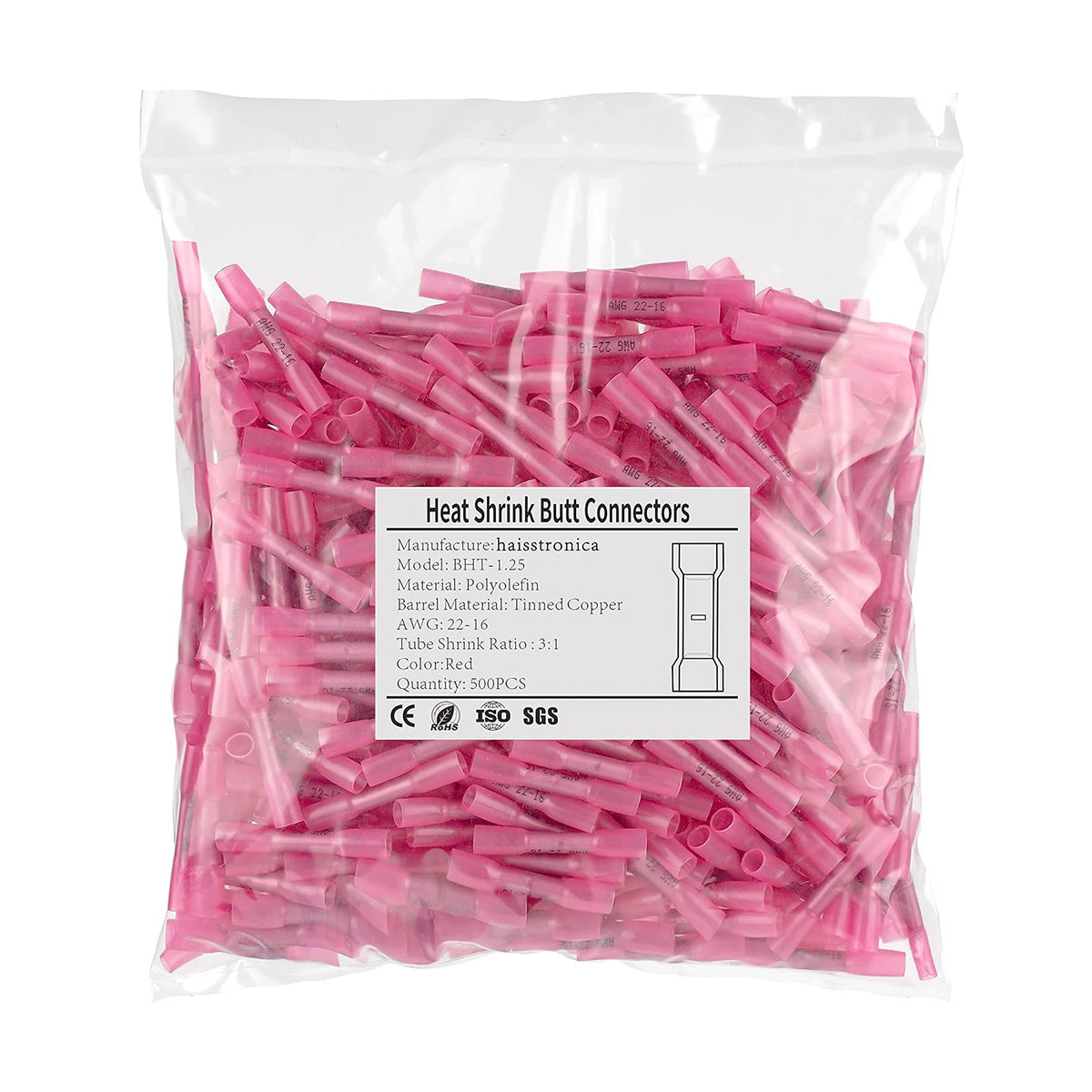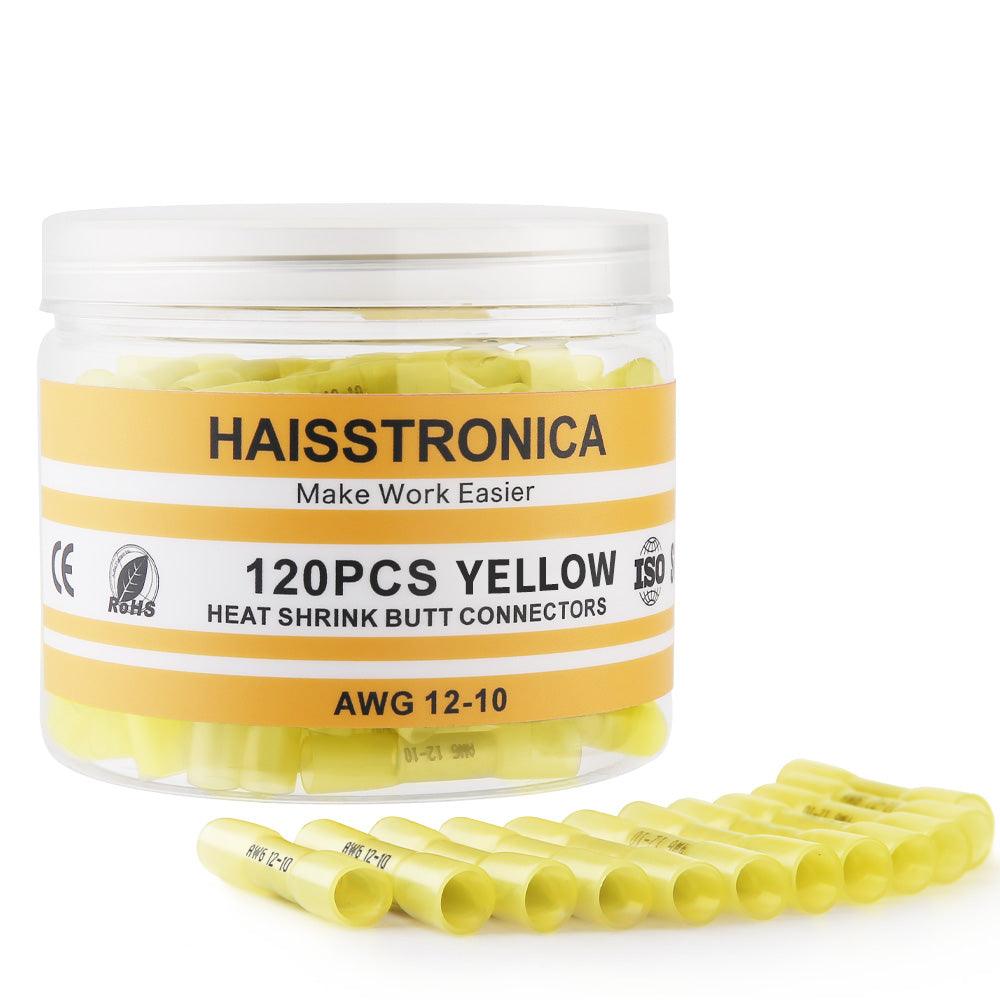If you’re staring at two loose conductors and wondering whether a few wraps of tape can stand in for a proper crimp, here’s the short, honest answer: electrical tape is for insulation, not for making (or holding) an electrical connection. A safe, durable connection relies on metal-to-metal contact maintained by mechanical force—crimping (or a listed splice device) does that; tape does not. The National Electrical Code (NEC) requires connections to be made with listed and identified methods and devices, not with tape alone.
Below, we break down when and why crimping wins, where solder or other listed connectors belong, how to pick safer alternatives for each scenario, and how to troubleshoot common failures—so your wire connection safety isn’t left to chance. We’ll also point you to an affordable, pro-grade tool to do the job right: the Haisstronica Ratchet Wire Terminal Crimping Tool (AWG 22–10) (for heat-shrink connectors), available here: Haisstronica ratcheting crimping tool.
Electrical Tape Is for Insulation, Not Connection (electrical tape vs crimping)
What tape actually does. Electrical tape—like 3M’s Scotch Super 33+—is designed to insulate low- and medium-voltage splices, harnesses, and terminations. It seals, cushions, and provides dielectric protection around a connection; it is not a structural fastener for joining conductors. Even the manufacturer’s own technical data sheets describe tape as “primary electrical insulation” or “jacketing”—not as a connector.
What a crimp does (and tape can’t). A proper crimp uses a tool, die, and terminal engineered as a system to cold-weld the conductor strands to the barrel. That metal-to-metal compression creates a gas-tight joint with low resistance that resists vibration and thermal cycling. This is why professional crimping tools, wire crimpers, and electrical crimping dies are specified across aerospace, automotive, and building trades. Industry handbooks from TE Connectivity and Molex emphasize that reliable crimps depend on matching terminal type, wire size, and die geometry—again, nothing about tape substituting for the connection itself.
What the code says. The NEC requires that “terminals and splices” be made using listed and identified means. In practice that means twist-on wire connectors (UL 486C), crimp splices (UL 486A/B/C), mechanical set-screw lugs, IDC splices, etc.—all devices evaluated to specific standards. Wrapping two wires with tape is not a listed splice.
Bottom line: Do not substitute tape for a connector. Use tape after a listed connector (e.g., over a heat-shrink butt splice for added abrasion or UV shielding) if the product instructions allow it. That’s crimp vs solder vs tape in one sentence: crimp (or another listed connector) makes the joint; solder may be used when appropriate and permitted; tape only insulates.
Safer Alternatives by Scenario (can you use electrical tape instead of crimping • crimp vs solder vs tape)
Below are common jobs and the safer, code-conforming ways to do them. Each option ties back to wire connection safety and industry guidance.
1) Joining copper branch-circuit conductors (residential/lighting)
-
Use: Twist-on wire connectors (UL 486C), crimp sleeves (UL 486A/B), or WAGO/lever-style connectors listed for the conductor type and gauge.
-
Why not tape? Tape won’t provide the spring pressure or mechanical retention a listed connector provides, so you’ll see loose connections and heating.
-
Reference: NEC 110.14 (terminals/splices must be listed/identified); UL 486C scope includes twist-on and spring-action splicing connectors.
2) Automotive/marine harness repair (vibration, moisture)
-
Use: Heat-shrink butt connectors with adhesive lining (UL listed), crimped using a quality ratchet crimp tool—then shrink. Optionally overwrap with self-fusing silicone tape for abrasion/UV protection (not as the connection).
-
Why here: Crimps maintain contact pressure under vibration and temperature cycling. Tape alone loosens and wicks moisture.
-
Reference: TE/Molex crimp guidance on gas-tight joints; NASA workmanship also favors properly executed crimps in vibration environments.
3) Photovoltaic (MC4) and other field-termination connectors
-
Use: Manufacturer-specified crimping tool and die for MC4 pins; never tape-wrap conductors as a “connection.”
-
Why: The contact resistance and seal integrity depend on exact crimp height and barrel design—tape compromises both.
-
Reference: Connector manufacturers’ tooling requirements; NEC 110.14.
4) Solid-conductor terminations
-
Use: Devices listed for solid wire (e.g., certain push-in or set-screw terminals) or compression lugs rated for solid conductor.
-
Important: NASA’s workmanship standard explicitly states: “Stranded wire shall be used for crimping. Crimping of solid wire is prohibited.” If you must terminate solid, use the device type that’s listed for it (often a screw clamp or appropriately rated lug/connector), not a typical closed-barrel crimp.
5) Temporary bundling, strain relief, and identification
-
Use: Cable ties, markers, split loom, or heat-shrink tubing. Electrical tape can help bundle temporarily, but it is not a structural fastener and will creep/ooze with heat.
-
Reference: 3M tape datasheets describe insulation and jacketing functions, not conductor joining.
Tool pick: For most 22–10 AWG automotive/marine/DC jobs, a ratcheting tool with controlled compression gives repeatable results. See Haisstronica’s Ratchet Wire Terminal Crimping Tool here: product link.
Troubleshooting (wire connection safety • electrical tape vs crimping)
If you’re cleaning up someone else’s taped splice—or diagnosing heat, flicker, or intermittent operation—work through this list:
Symptom: Warm or discolored tape at a splice
-
Likely cause: Loose/oxidized joint under the tape (tape used as a “connector”). High resistance turns into heat.
-
Fix: De-energize. Remove tape. Cut back to bright copper. Re-splice with a listed connector—e.g., butt splice or twist-on connector—rated for the conductor type (solid vs stranded) and AWG. Insulate per instructions (heat-shrink, cap, or tape over the connector, not as the connector).
-
Why: NEC requires listed splicing means; UL 486A/B/C devices maintain contact pressure—tape does not.
Symptom: Intermittent accessory in a car/boat, visible tape “pigtails”
-
Likely cause: Vibration and thermal cycling loosened a taped joint.
-
Fix: Replace with crimped, adhesive-lined heat-shrink butt connectors using a wire crimping tool. Verify pull-out strength. Optionally add loom and strain relief.
-
Note: TE/Molex documents stress correct die geometry and pull-out testing for reliable crimps.
Symptom: Broken solid conductor at a taped joint
-
Likely cause: Repeated bending; solid copper work-hardens and fractures when unconstrained.
-
Fix: Use a device rated for solid (push-in/screw-clamp) or pigtail to stranded using a listed connector inside a box/enclosure, then crimp to your stranded harness if needed. Do not crimp typical closed-barrel terminals onto solid wire (see NASA standard).
Symptom: Moisture ingress, green corrosion under tape
-
Likely cause: Tape isn’t a moisture-proof seal; capillary action draws water into a poor joint.
-
Fix: Cut back corrosion. Use adhesive-lined heat-shrink connectors and a ratchet crimp tool; then shrink to seal. Optionally overwrap with self-fusing silicone tape for abrasion only.
Read more: How To Crimp Wires
FAQ: Crimp vs Solder vs Tape (quick hits)
Q: Is solder better than crimping?
A: “Better” depends on the application and standard. In high-vibration environments and for production harnesses, correctly executed crimps usually win for consistency and fatigue resistance. Some codes restrict solder-only splices unless mechanically secured first. Always follow device manufacturer instructions and the NEC.
Q: Can I crimp solid wire?
A: Not with typical closed-barrel terminals; authoritative workmanship standards prohibit crimping solid wire. Use terminals/lugs listed for solid conductors or transition to stranded with a listed connector inside an enclosure.
Q: Is there any situation where tape alone is okay for connecting wires?
A: No. Tape is insulation and jacketing. It does not create or maintain the electrical joint required by the NEC. Use a listed connector first; apply tape only if the product’s instructions call for it.
Buy it through pic or link: Crimping Tool for Solar Connectors AWG 14 12 10
Step-By-Step: A Safer, Code-Conforming Crimp (for most 22–10 AWG repairs)
-
Select the right terminal (e.g., heat-shrink butt connector) for conductor type (stranded/solid), AWG, environment (marine/automotive), and temperature rating.
-
Strip to spec (no nicked strands).
-
Use a matched die in a ratcheting crimping tool; align the barrel, crimp to the proper height (manufacturer chart).
-
Pull-test the crimp; no movement.
-
Seal (shrink) per instructions; optionally overwrap for abrasion—not as a substitute for the seal.
-
Support the harness (strain relief, loom) to keep vibration from the joint.
TE and Molex handbooks call out crimp geometry, conductor fill, and pull-out testing as key to long life.

Buy it through pic or link: Quick Change Jaws Crimping Tool for Non-Insulated Wire Connectors AWG 22-8
The Big Picture: Why electrical tape vs crimping isn’t a fair fight
-
Mechanics: Tape provides negligible compressive force at the interface; crimps deliver repeatable, engineered compression.
-
Chemistry: A gas-tight crimp limits oxidation; tape traps air and may trap moisture without an internal seal.
-
Thermal cycling: Tape creeps; connectors with spring force or compressed barrels maintain contact under heat.
-
Compliance: NEC 110.14 demands listed splicing means; UL standards (486 series) define those devices. Tape is not one.
If you’re serious about wire connection safety, invest in a proper crimping tool and use listed connectors. For everyday field work in the AWG 22–10 range, a controlled-ratchet tool with matched dies is the simplest path to pro results.

Buy it through pic or link: Quick Change Jaws Crimping Tool for Heat Shrink Wire Connectors AWG 22-10
Recommended Tool (so you can stop taping and start crimping)
Meet the budget-friendly, DIY-proof workhorse: Haisstronica Ratchet Wire Terminal Crimping Tool (AWG 22–10, Heat-Shrink Connectors). It provides consistent compression, a ratcheting mechanism that won’t release until the crimp is fully formed, and ergonomic handles—ideal for automotive, marine, RV, and household low-voltage projects.
👉 Get the Haisstronica ratchet crimper
Conclusion
You asked: “Can you use electrical tape instead of crimping?” For wire connection safety, the answer is no. Electrical tape is a great insulator and jacket; it is not a connector. The NEC demands listed splicing methods; industry guidance (TE, Molex, NASA, UL) explains why crimping (or other listed connectors) provide the mechanical force and low-resistance contact that tape never will. Choose the right connector for your conductor type (solid vs stranded), environment, and AWG; execute the crimp with a proper crimping tool; then insulate and support the joint. That’s the dependable path—no sticky shortcuts.
Ready to upgrade your kit? Pick up the Haisstronica ratcheting crimper and a pack of heat-shrink butt splices and make the fix once—and right.
Read more: How To Crimp Wires
